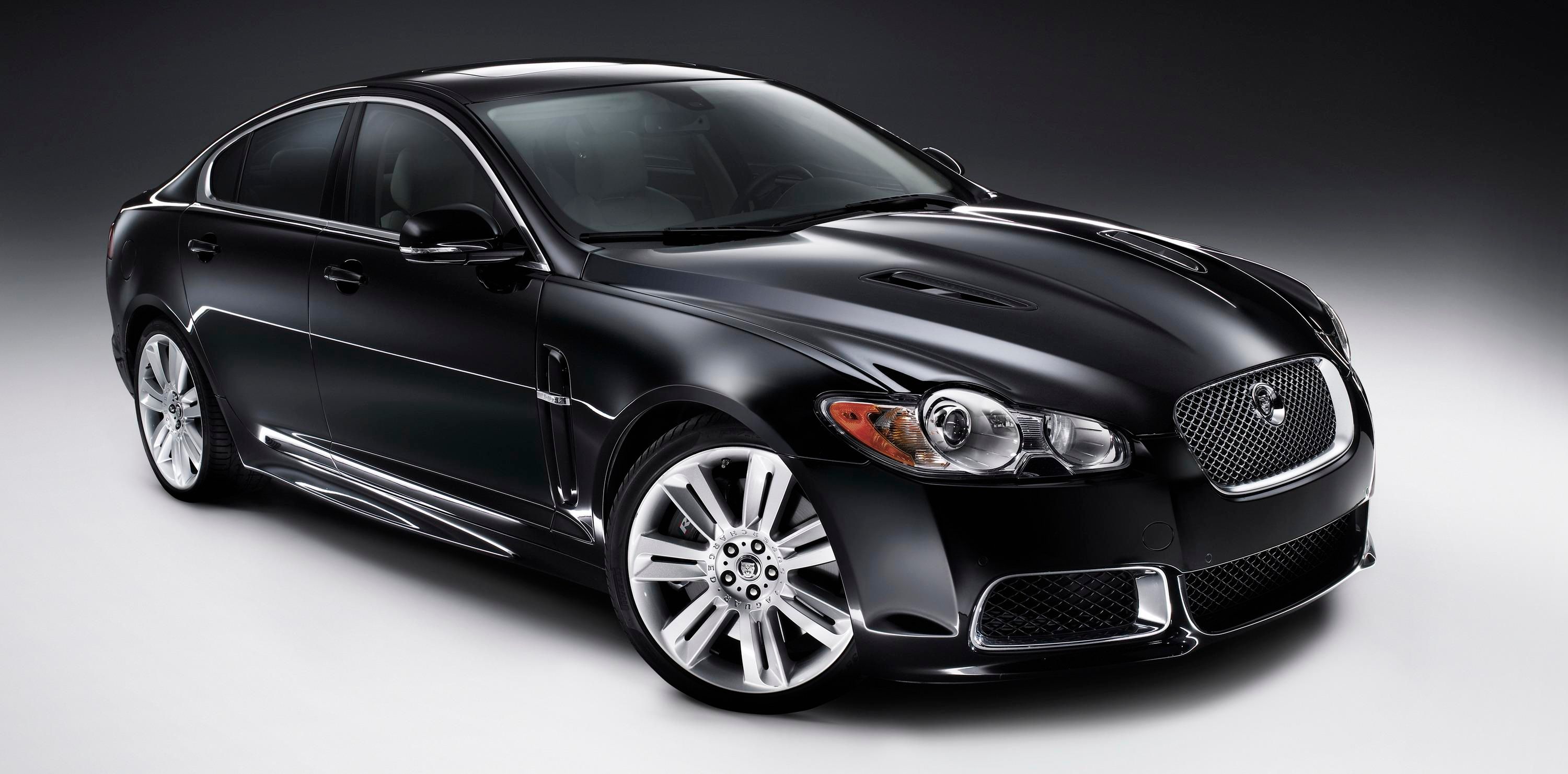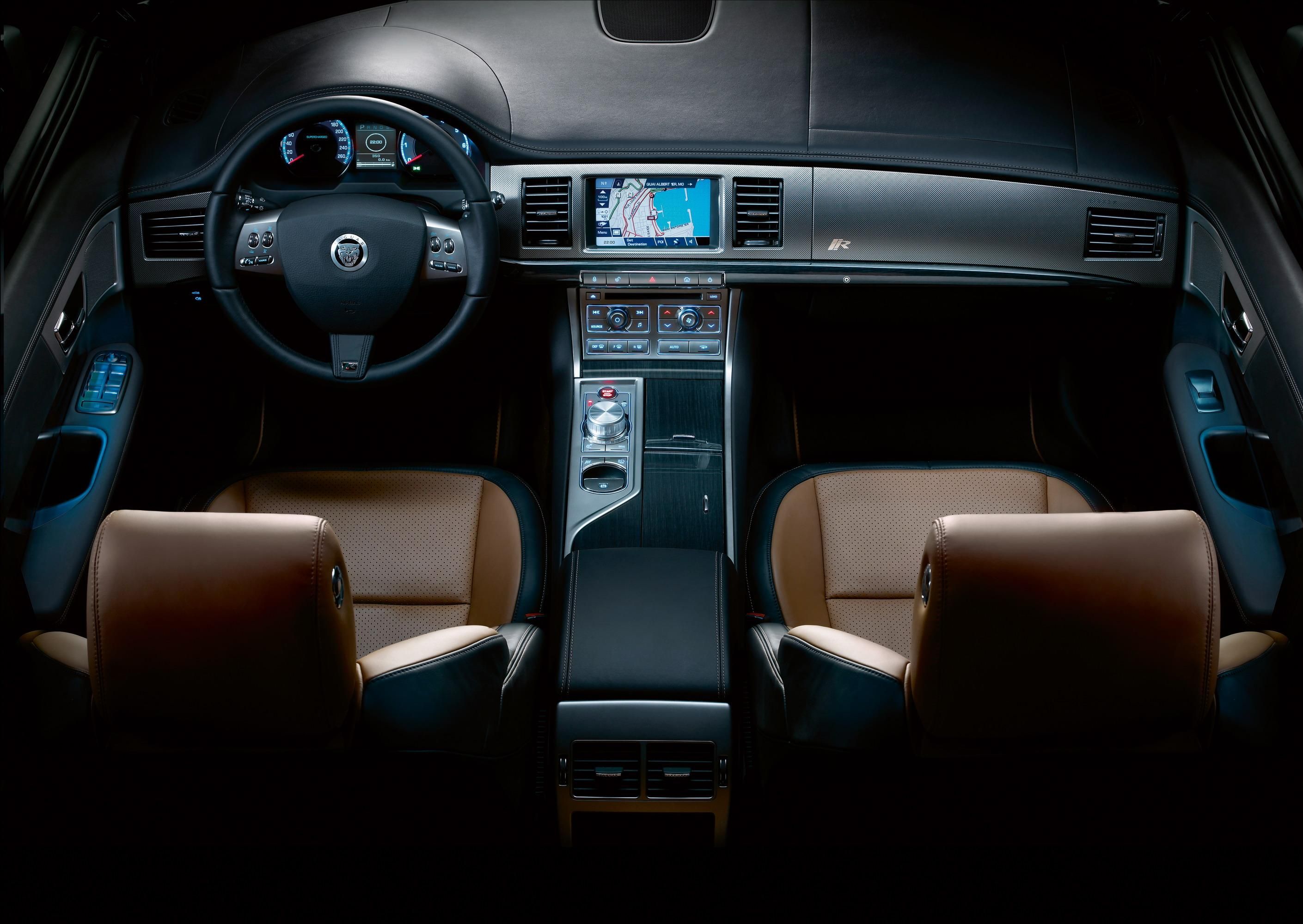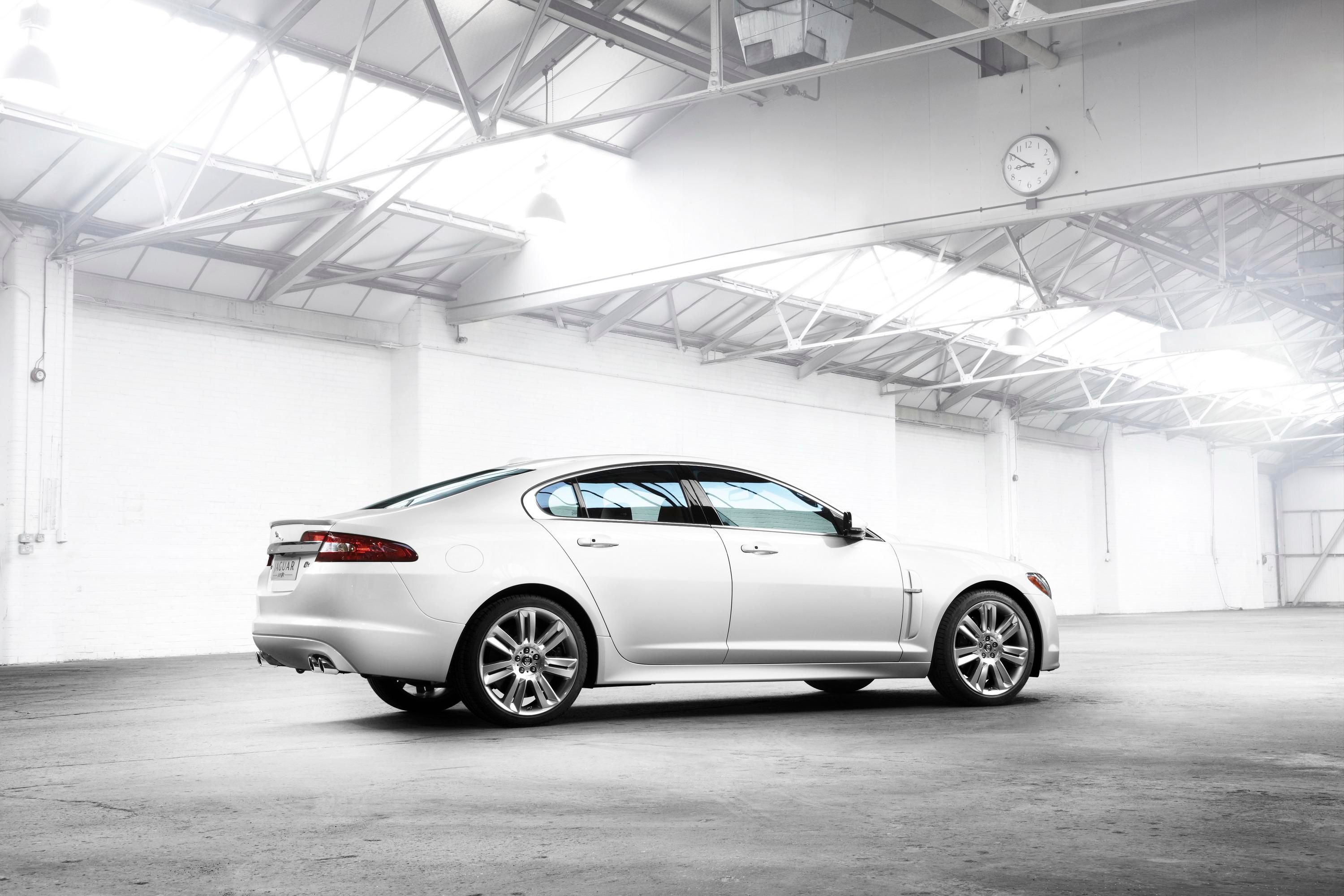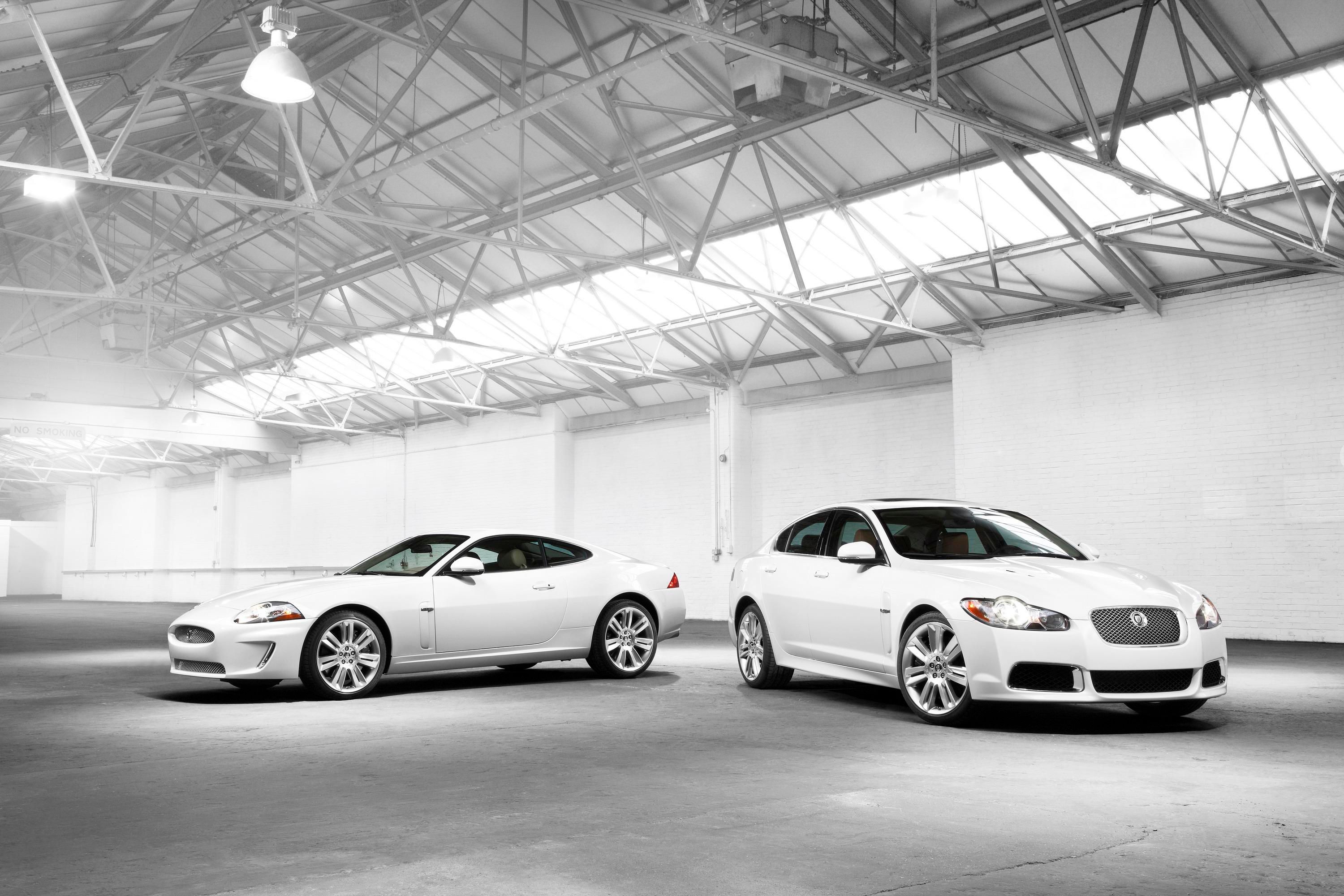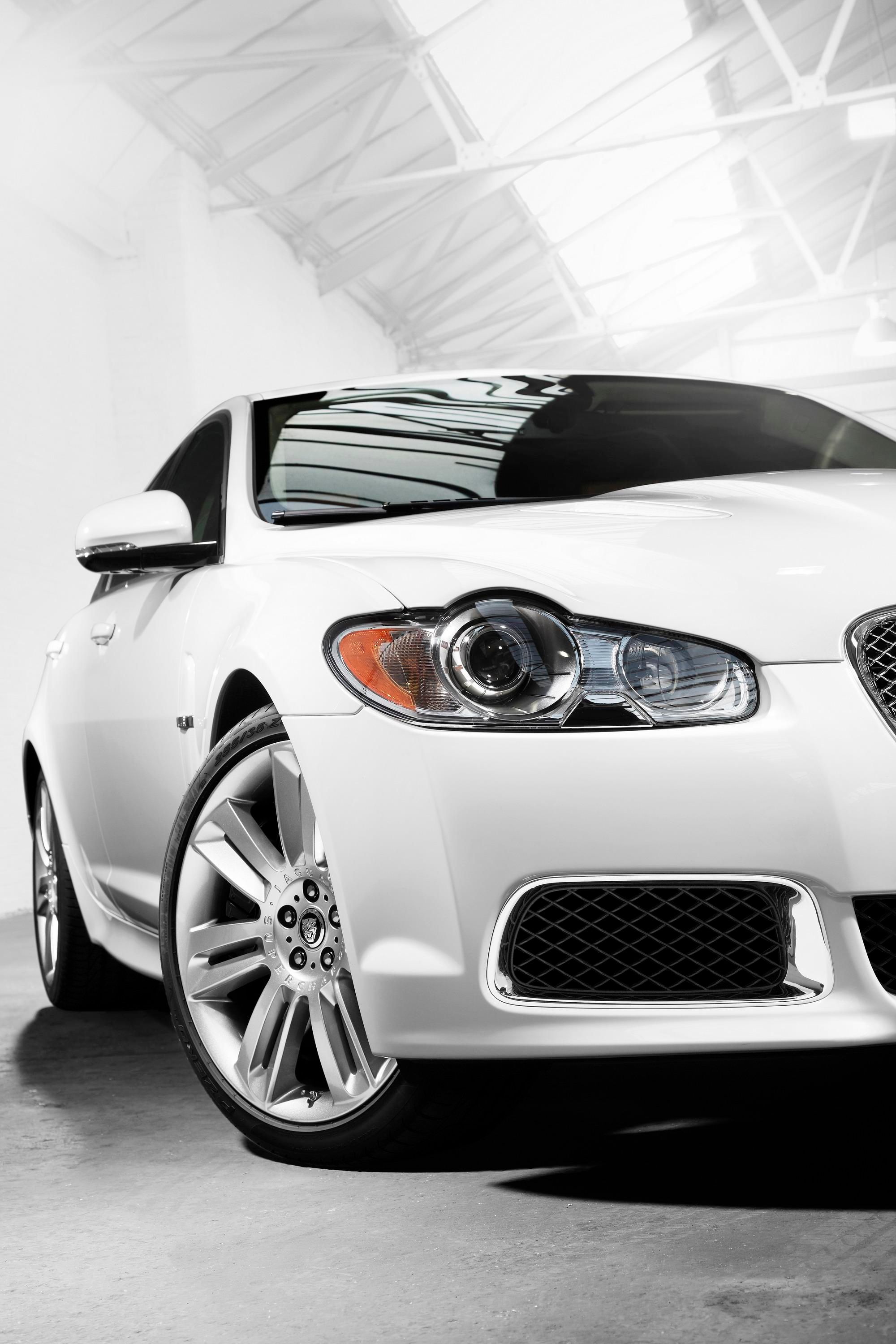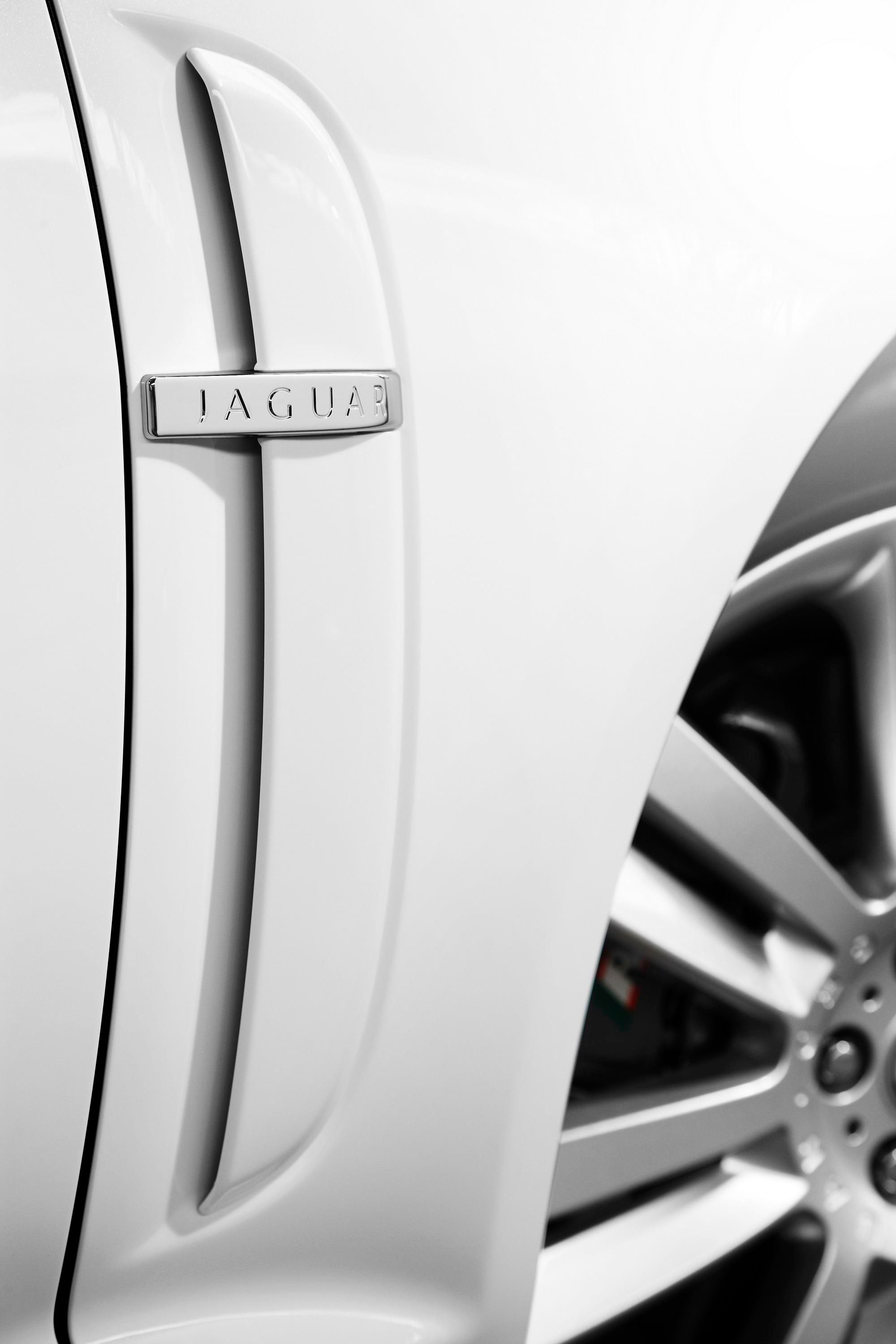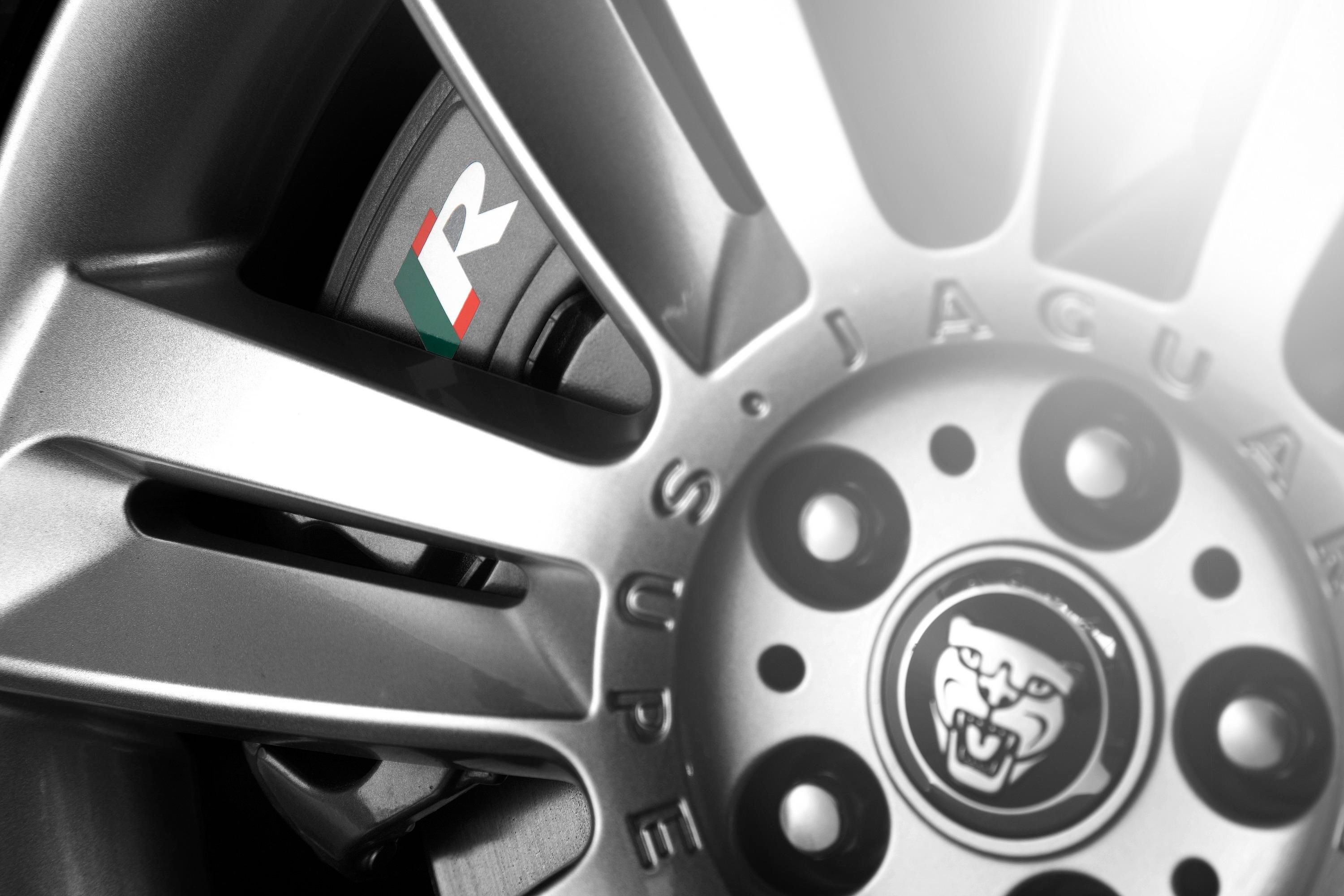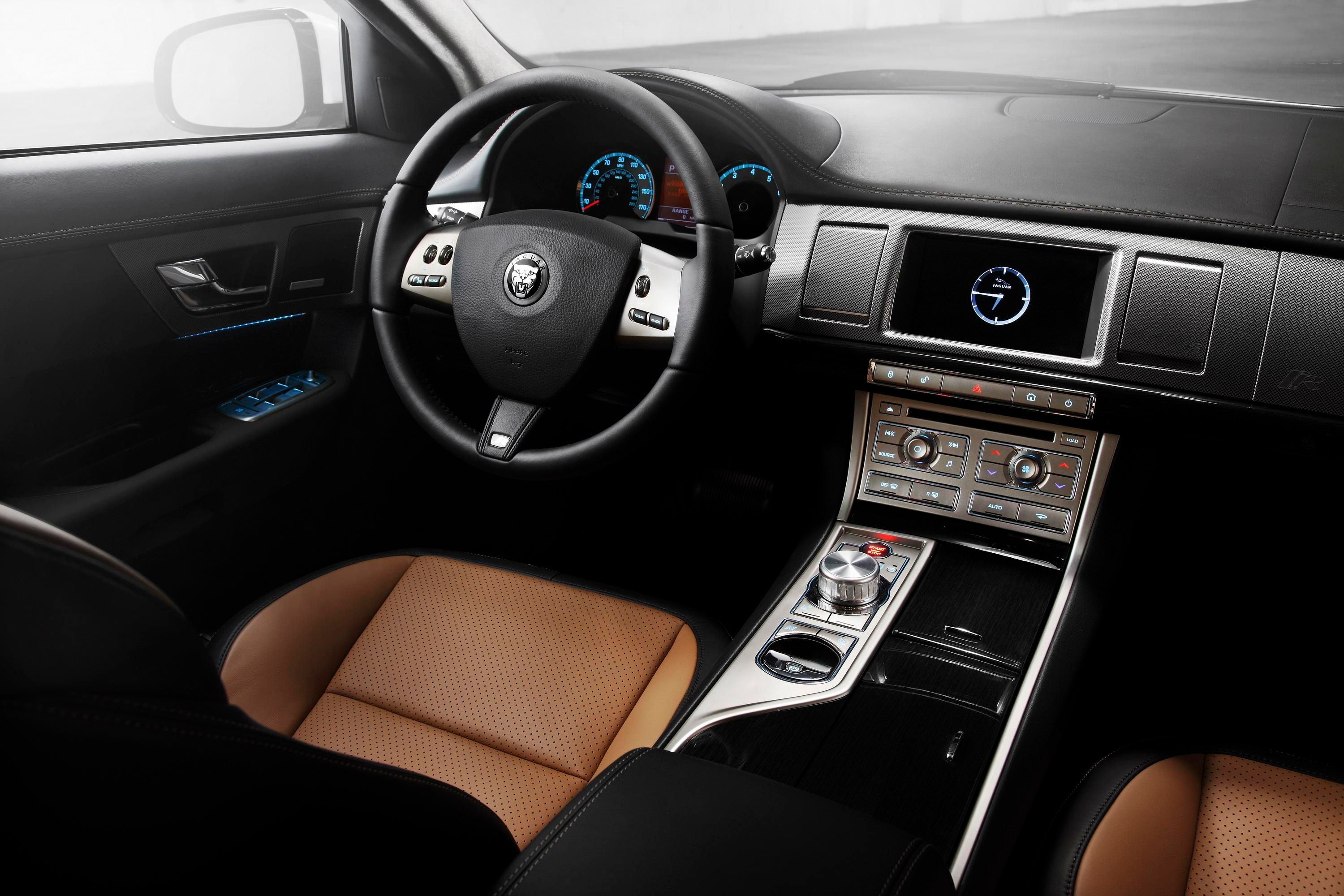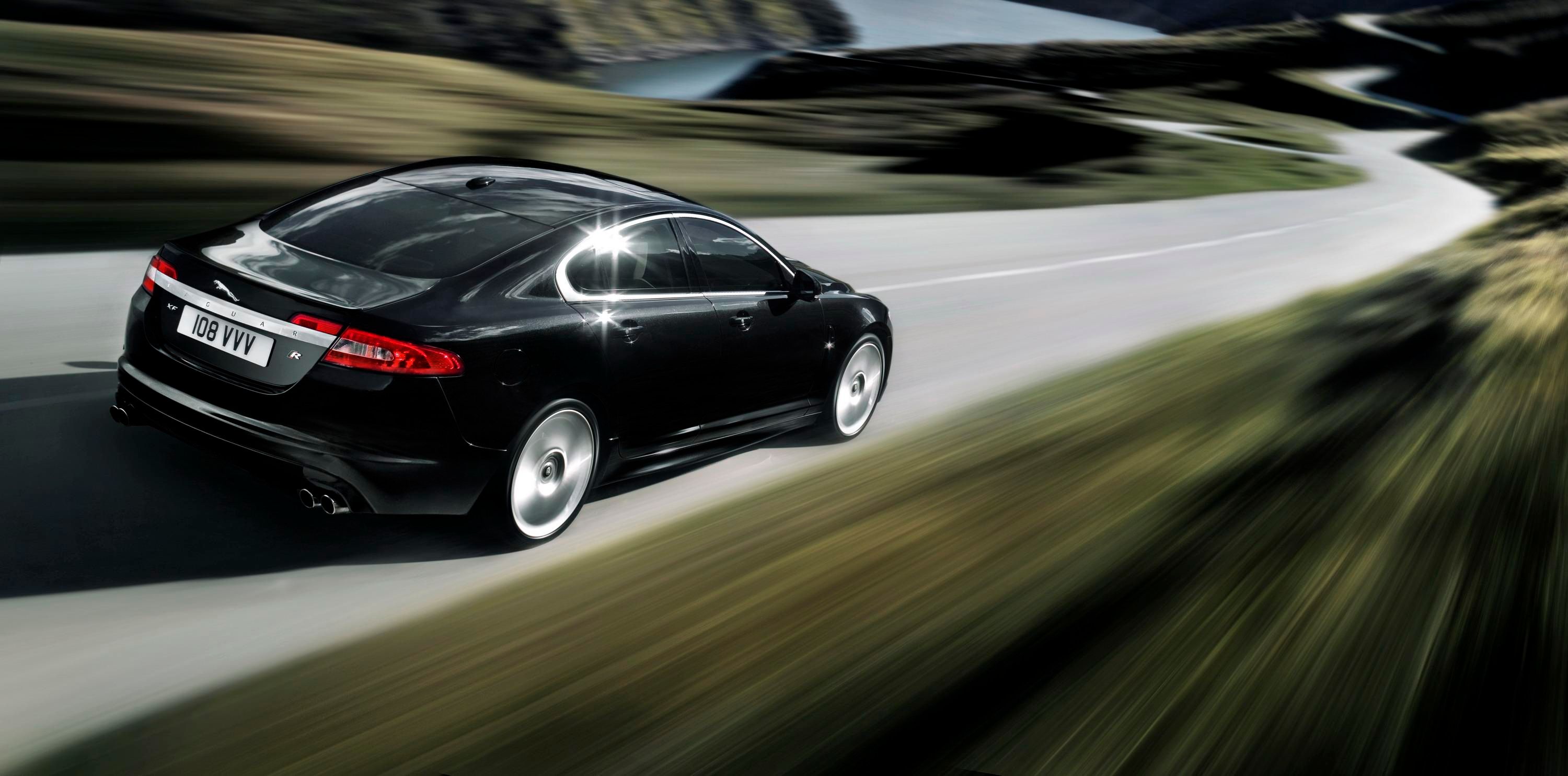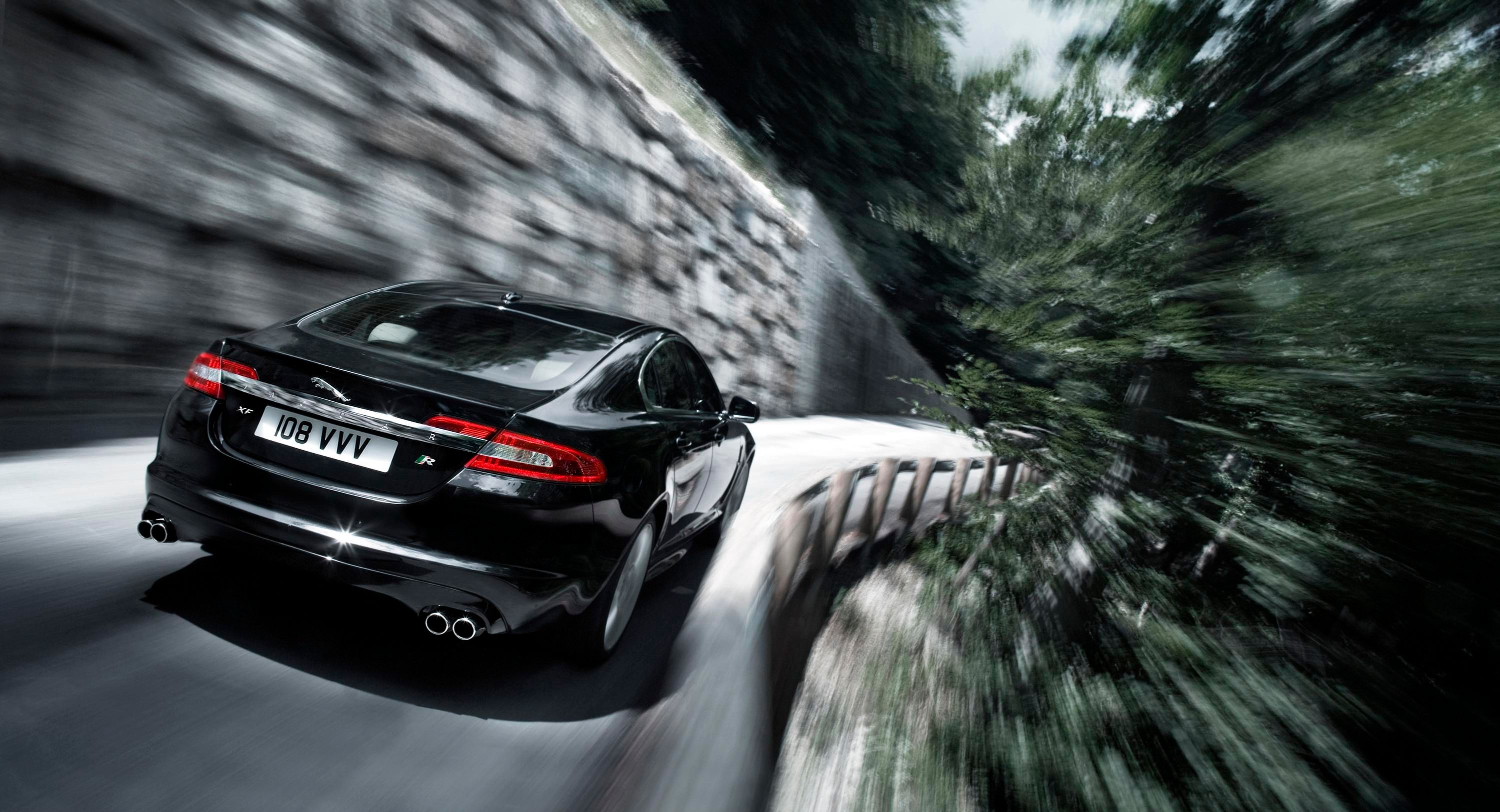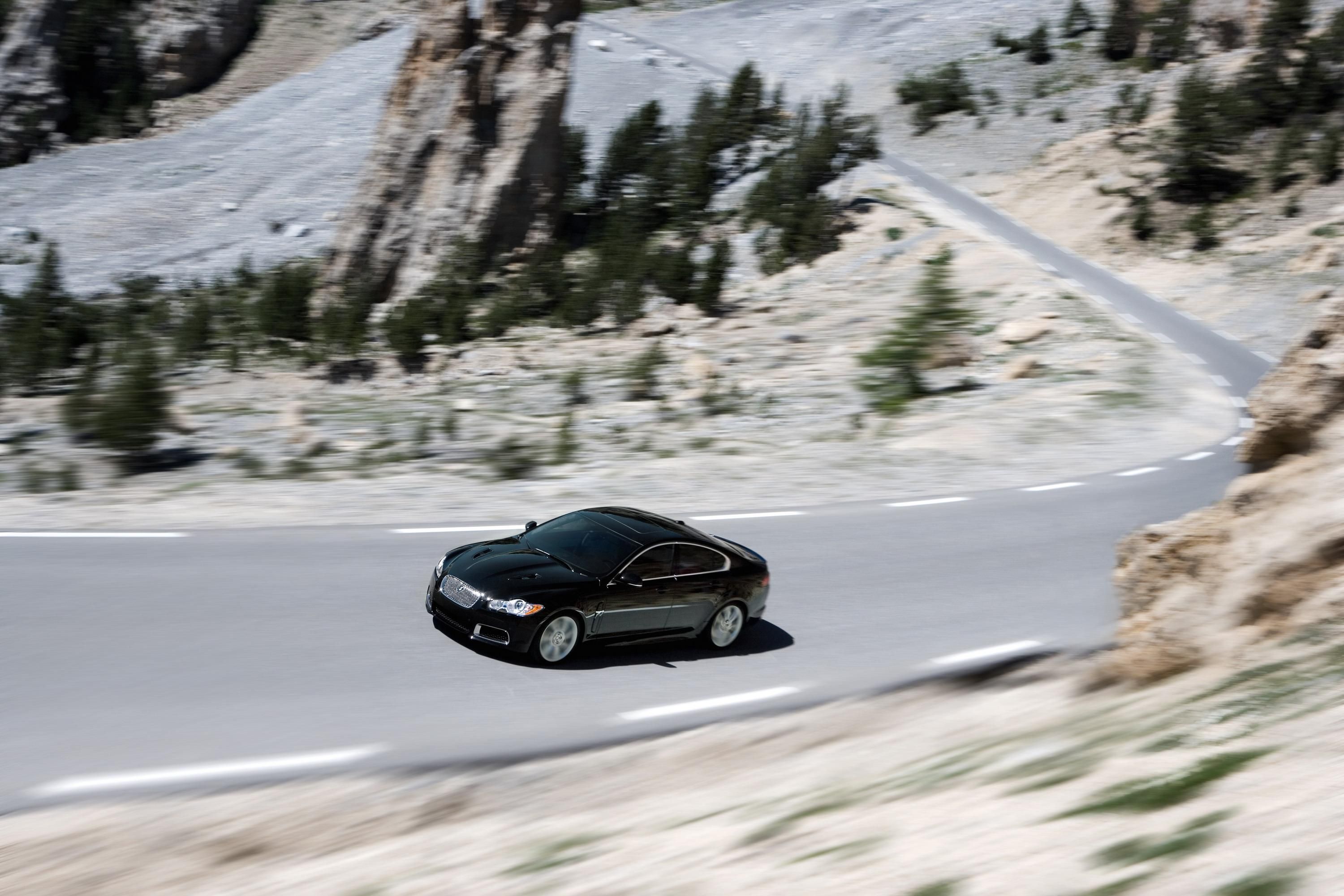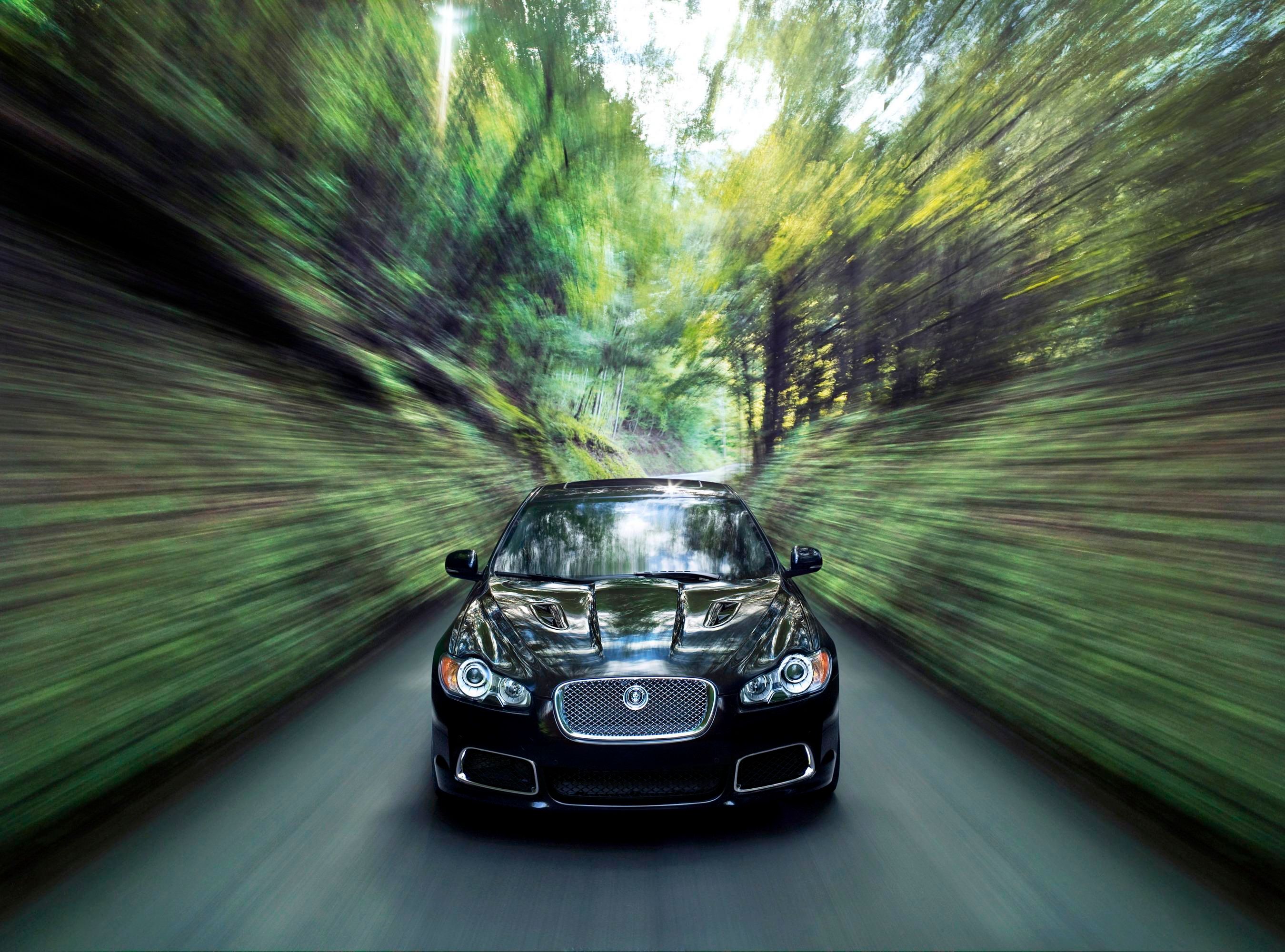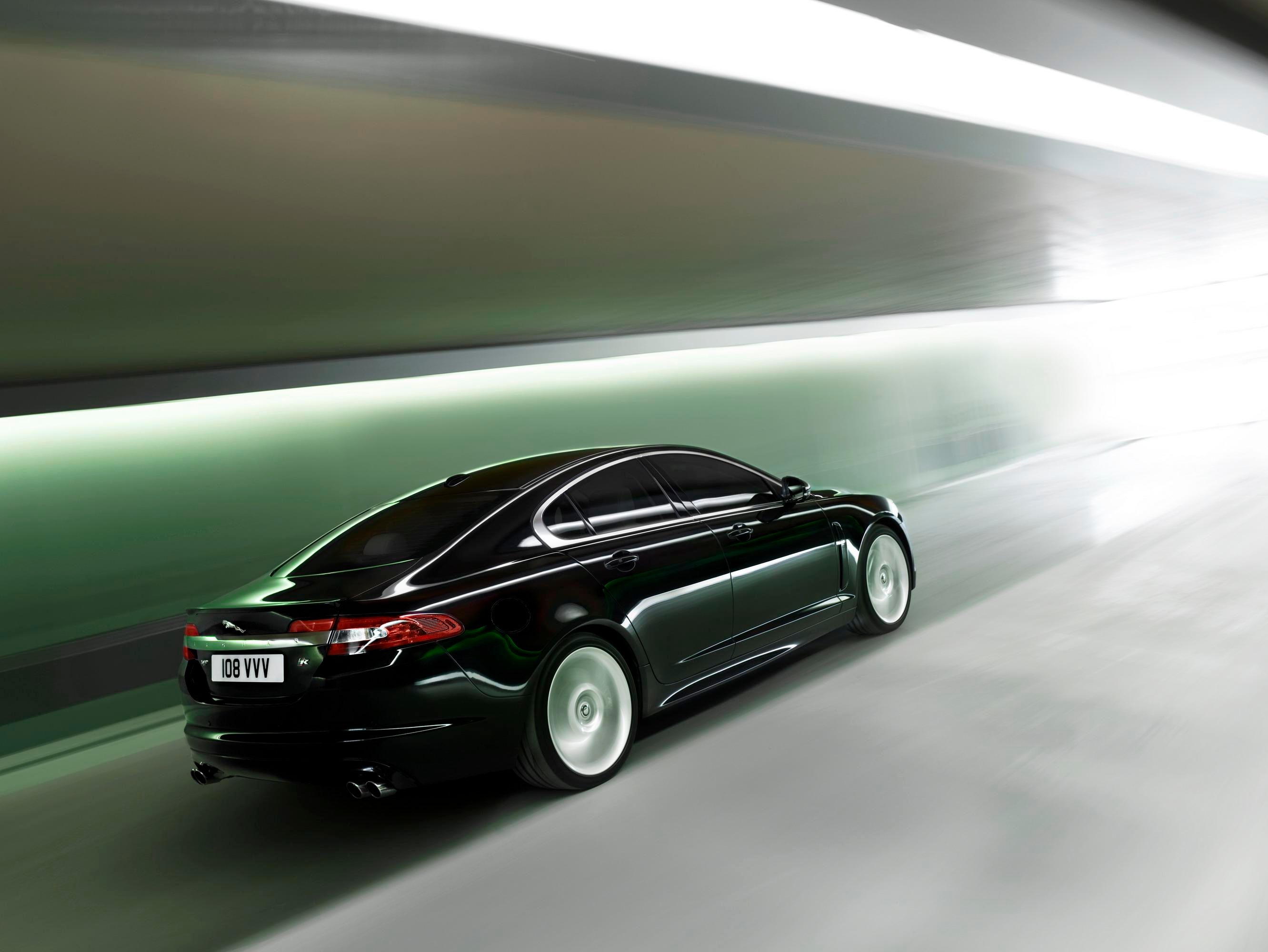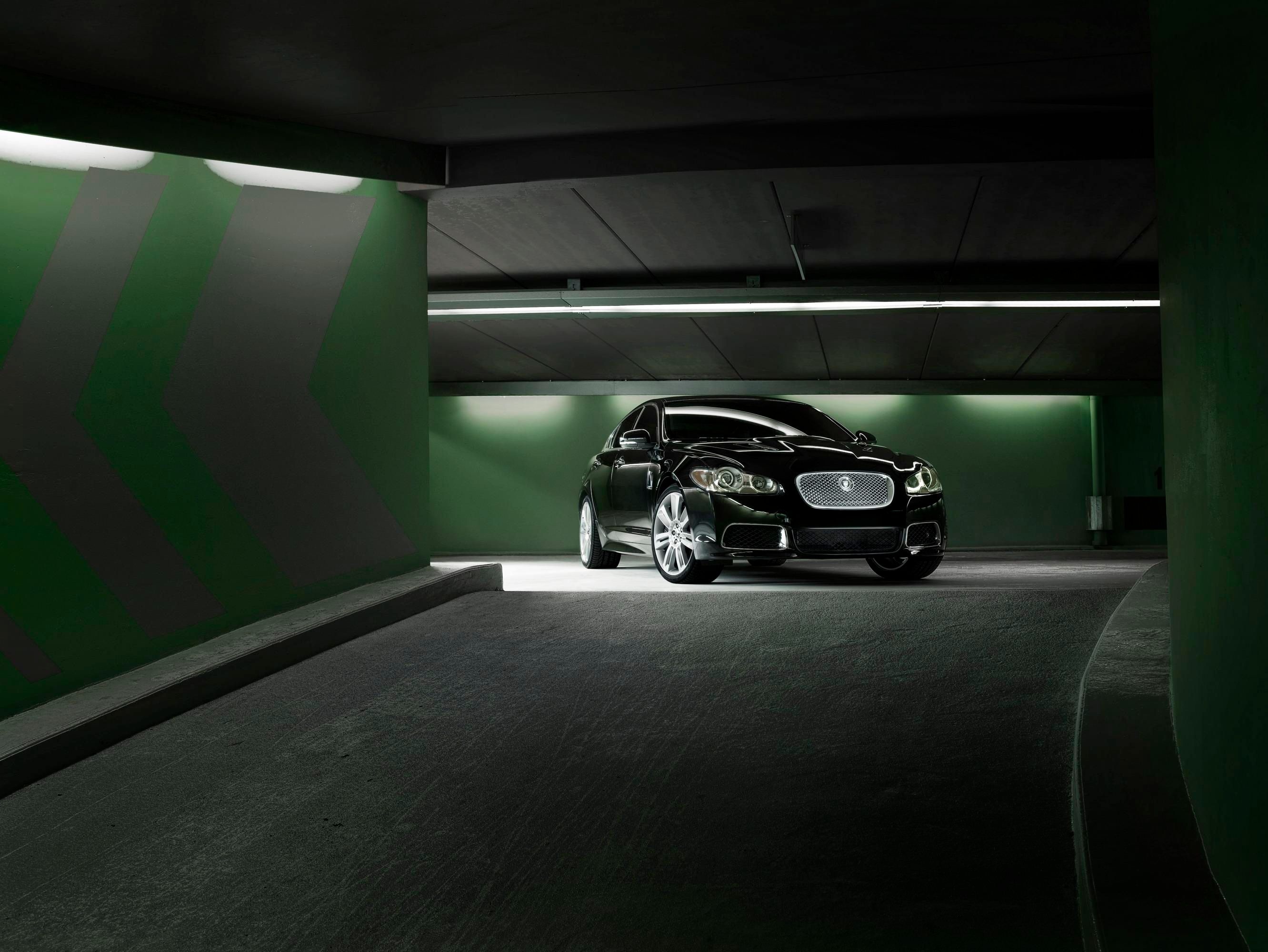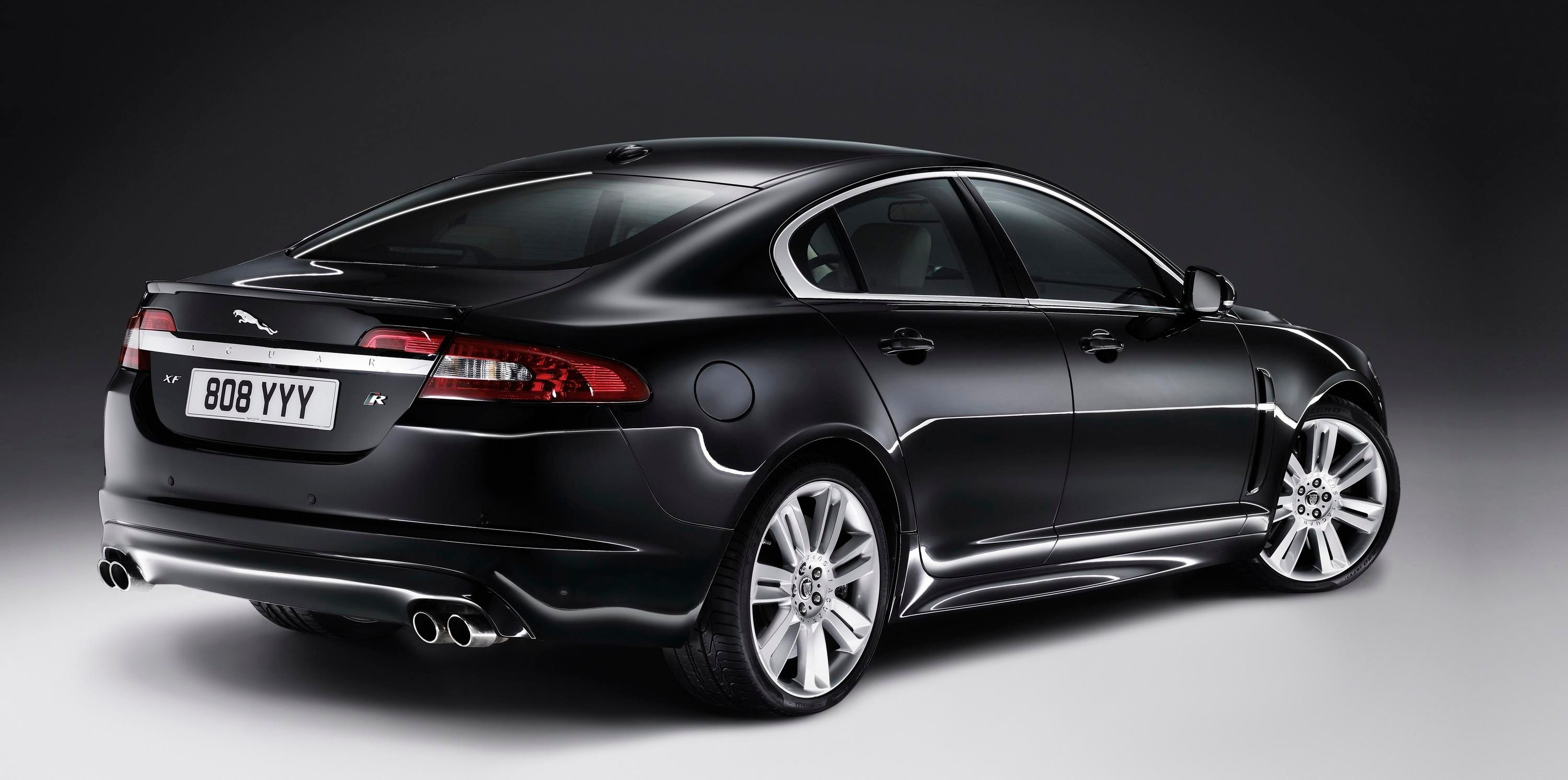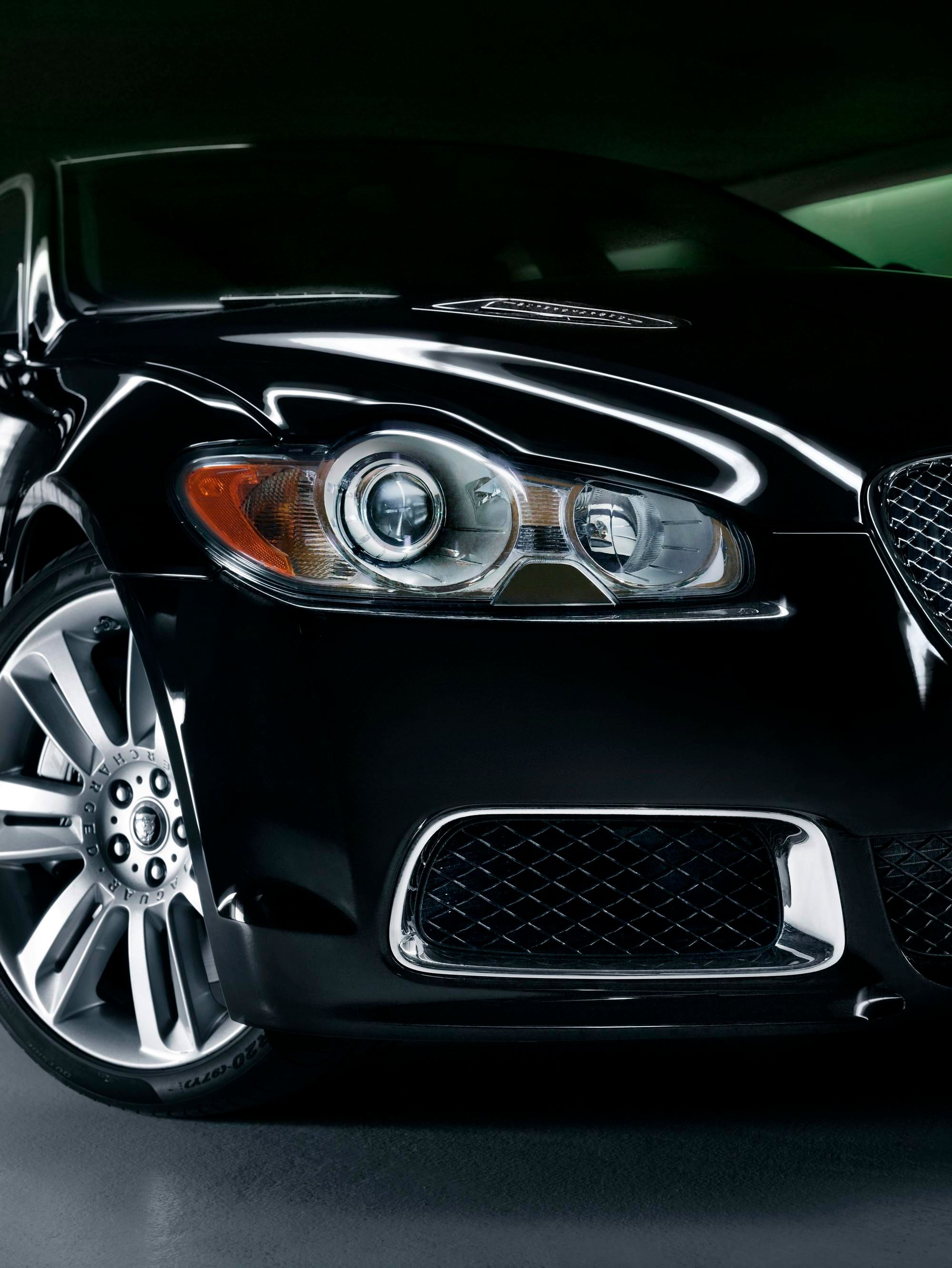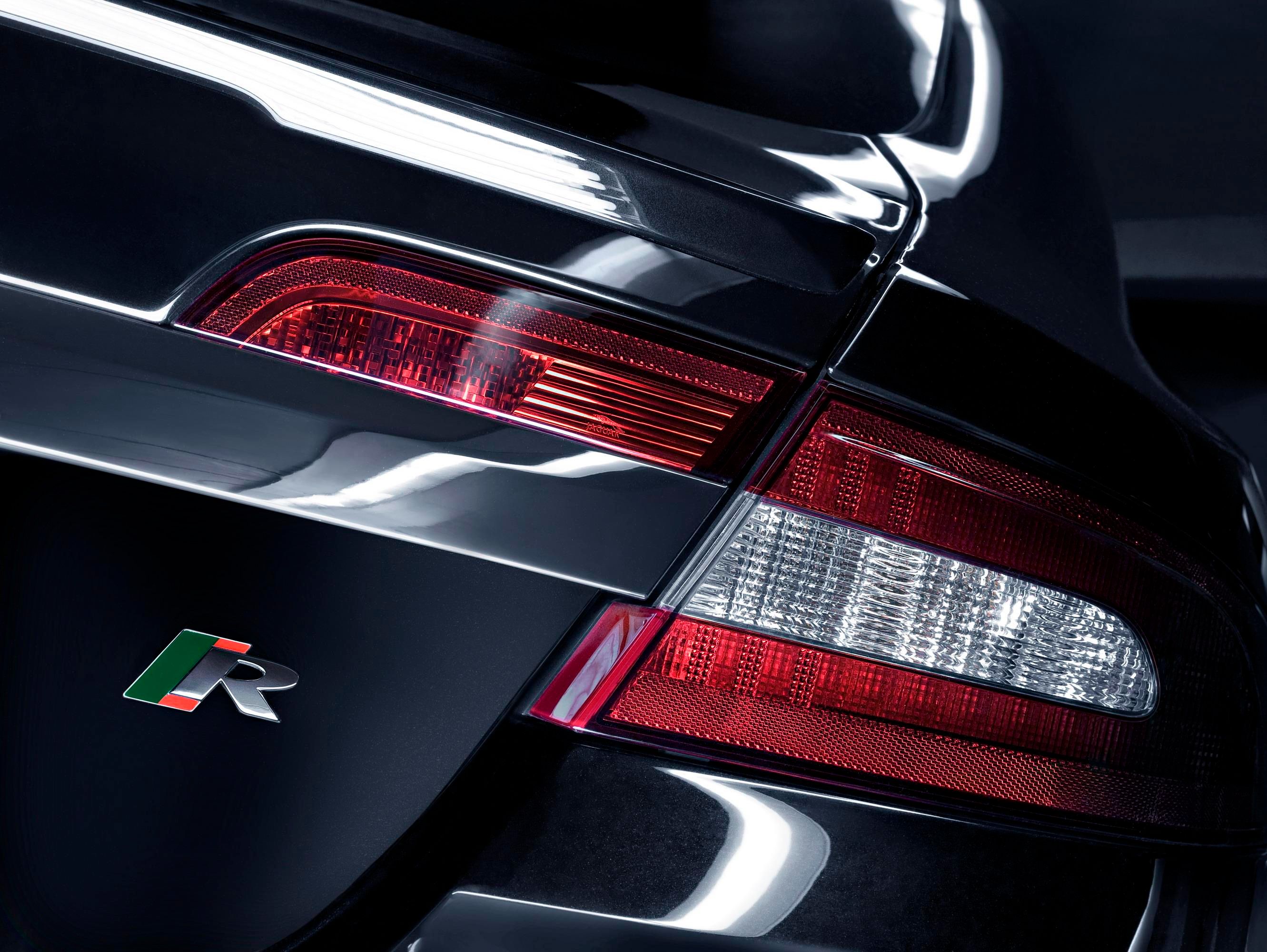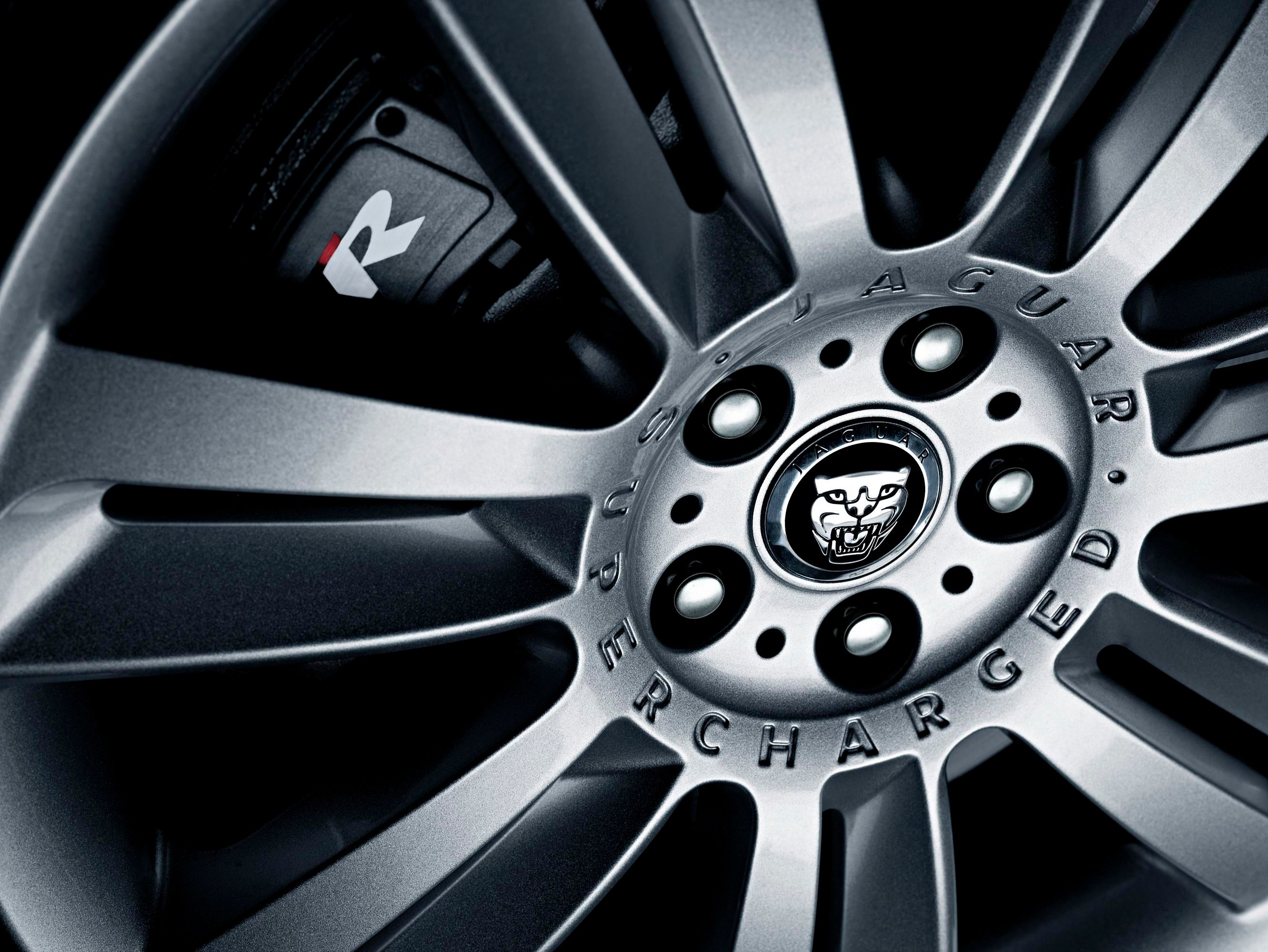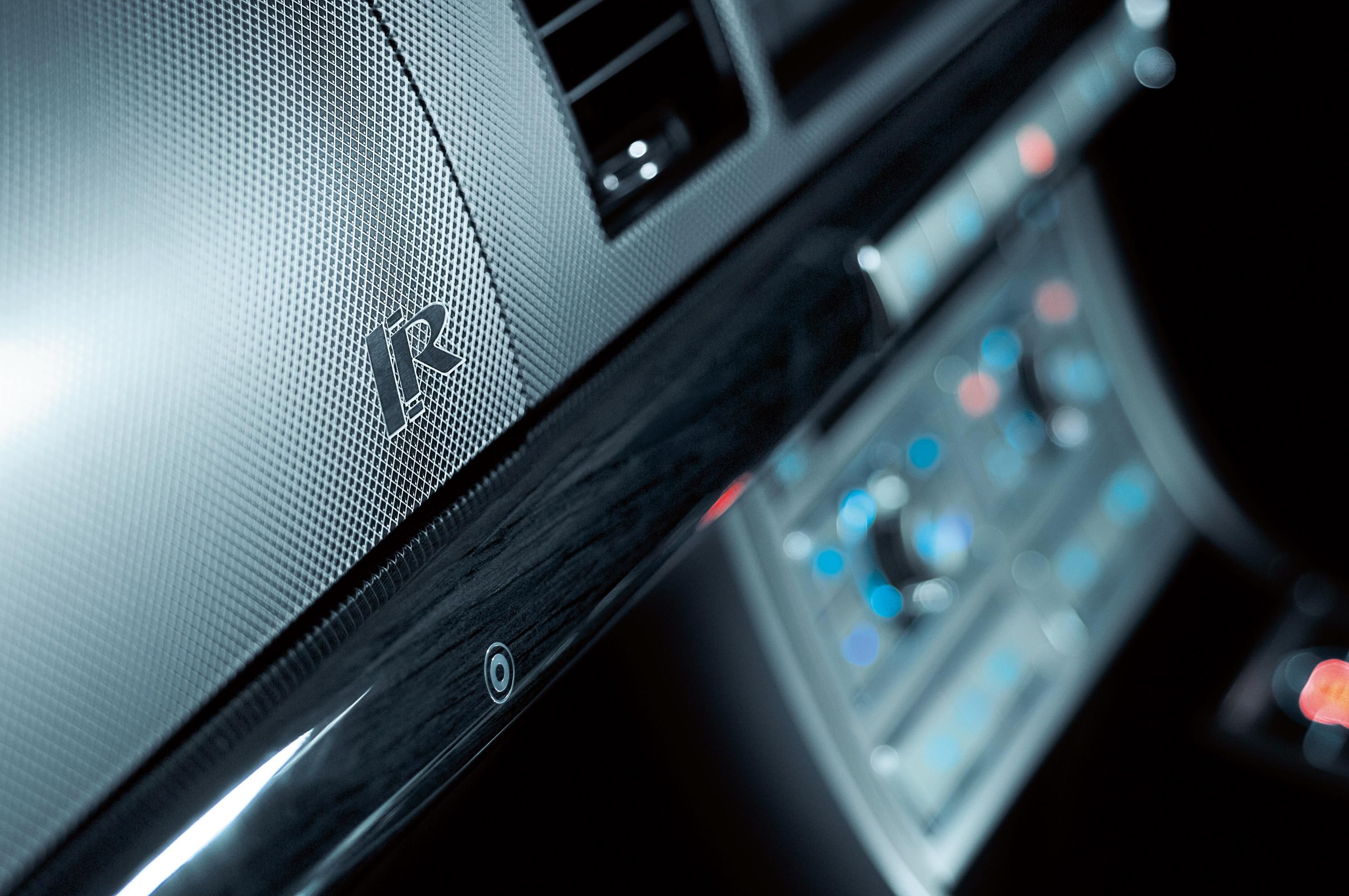What's the big deal? It's just a Jaguar XF with a few new touches and a little bigger engine, right? When it looks cool and gets 90 more hp it is a BIG DEAL.
We've spent moths speculating about the new Jaguar XFR. We were especially keep to the enlarged 5.0-liter V8 engine that debuts in this car. Jag not only brought up the displacement from 4.2-liter, but it also dropped in a supercharger in the XFR for good measure. The bar for most powerful XF has now been raised from 420 hp to 510 hp. The result of this over 21 percent power increase brings the 0 to 60 time from 4.9 secs to an estimated 4.7 secs, and the quarter mile sould come 0.3 secs sooner at 13.1. While the car will not be offered with a manual transmission, Jaguar enhanced its electronically controlled, six-speed transmission with additional clutch plates and an uprated torque converter to facilitate the extra power.
In true English fashion, all the extra performance comes in an understated package. The XFR distinguishes itself with larger air intakes, a couple small hood louvers, and a few new chrome bits. This restrained look may do well for Jaguar as it goes up against established rivals like the BMW M5->ke2922 or our car of the year, the Cadillac CTS-V.
We don't want to appear like a fussy two-year old, but since we really liked the XF in our test fleet, when it comes to the XFR: we want it, we want it, WE WANT IT.
Press release after the jump.
2010 Jaguar XFR
- Make: Array
- Model: 2010 Jaguar XFR
- Engine/Motor: Supercharged V8
- Horsepower: 510
- Torque: 461
- [do not use] Vehicle Model: Array
Press release
When it was introduced last year, the XF was recognised as a dramatic expression of a bold new Jaguar design language. It also soon became apparent that here was a car where the driving experience exceeded the expectations created by the striking appearance. Now, the new XFR takes this experience to new levels, shifting the balance even further towards dynamic performance while still retaining the XF’s core values as a refined and luxurious sports saloon. Power comes from an all-new 5.0-litre direct-injection supercharged V8 engine delivering 510PS and 625Nm of torque. Immediately recognisable, the new XFR sports a new front-end design with revised chrome air intakes, ‘Supercharged’ bonnet louvres, four polished exhaust tailpipes, an aerodynamically functional boot lid spoiler and side sills, unique new 20-inch wheels and discreet ‘R’ badging.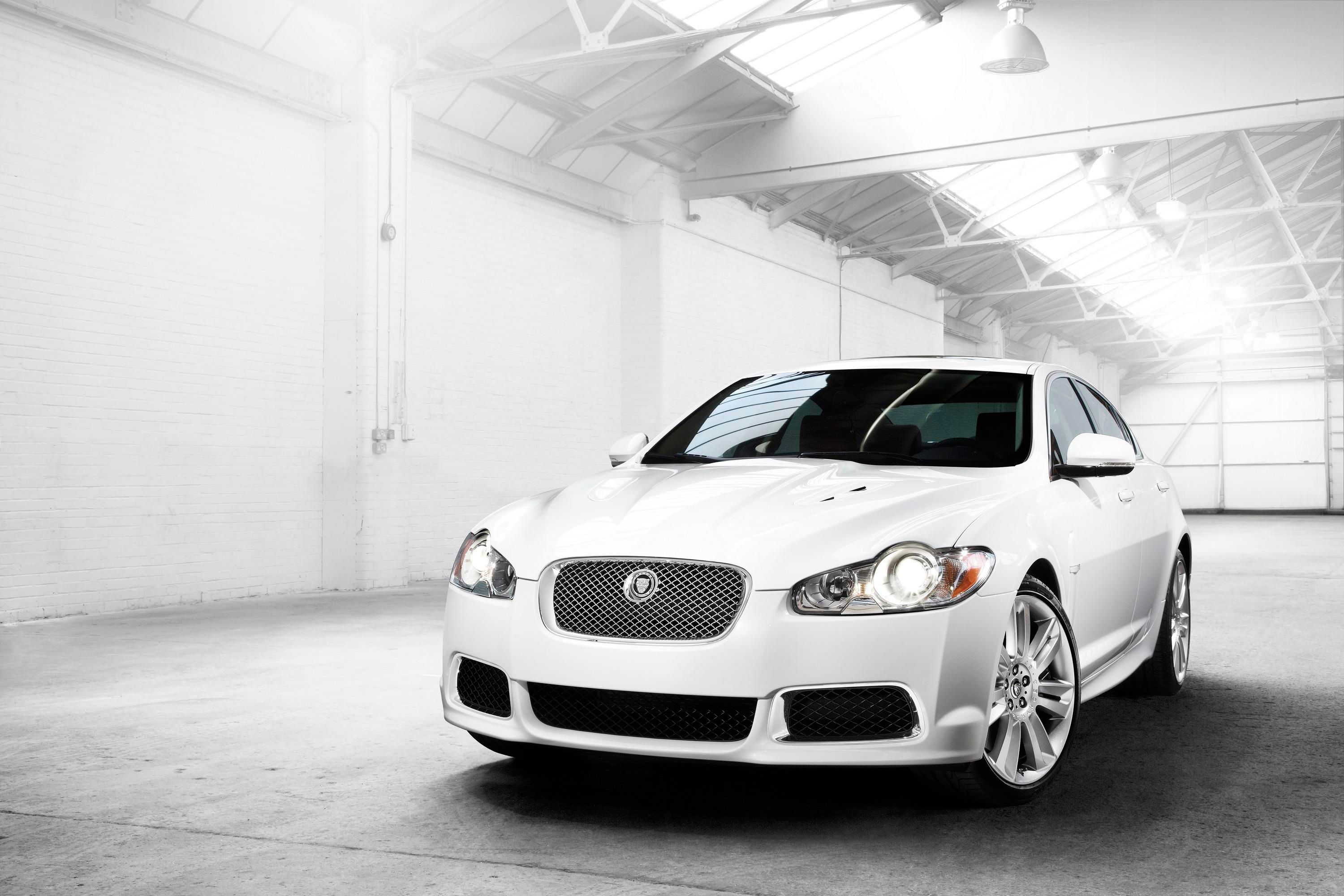 The new XFR features Active Differential Control and Adaptive Dynamics – technologies being introduced for the first time on this and the XKR sports car. The electronically controlled differential and suspension system work together to optimise traction under acceleration and cornering – highly appropriate for a car that offers an electronically limited top speed of 155mph and reaches 60mph from standstill in just 4.7 seconds. The XFR also adds a faster steering ratio and uses the XF’s largest ventilated disc brakes – although every version of the XF with the new, more powerful engines features uprated braking specification.
The new XFR features Active Differential Control and Adaptive Dynamics – technologies being introduced for the first time on this and the XKR sports car. The electronically controlled differential and suspension system work together to optimise traction under acceleration and cornering – highly appropriate for a car that offers an electronically limited top speed of 155mph and reaches 60mph from standstill in just 4.7 seconds. The XFR also adds a faster steering ratio and uses the XF’s largest ventilated disc brakes – although every version of the XF with the new, more powerful engines features uprated braking specification.
“The new XFR is the ultimate Jaguar sports saloon. The all-new, AJ-V8 Gen III R supercharged engine delivers a massive 510 horsepower and the advanced Active Differential Control and Adaptive Dynamics suspension make sure that the driver can use it.”
Mike O’Driscoll, Managing Director, Jaguar Cars
The attributes that marked out the XF at launch are still very much new and in the public eye. The four-door XF has the visual excitement of a coupe, but room inside for five adults to enjoy an interior wholly contemporary in style, yet uniquely Jaguar.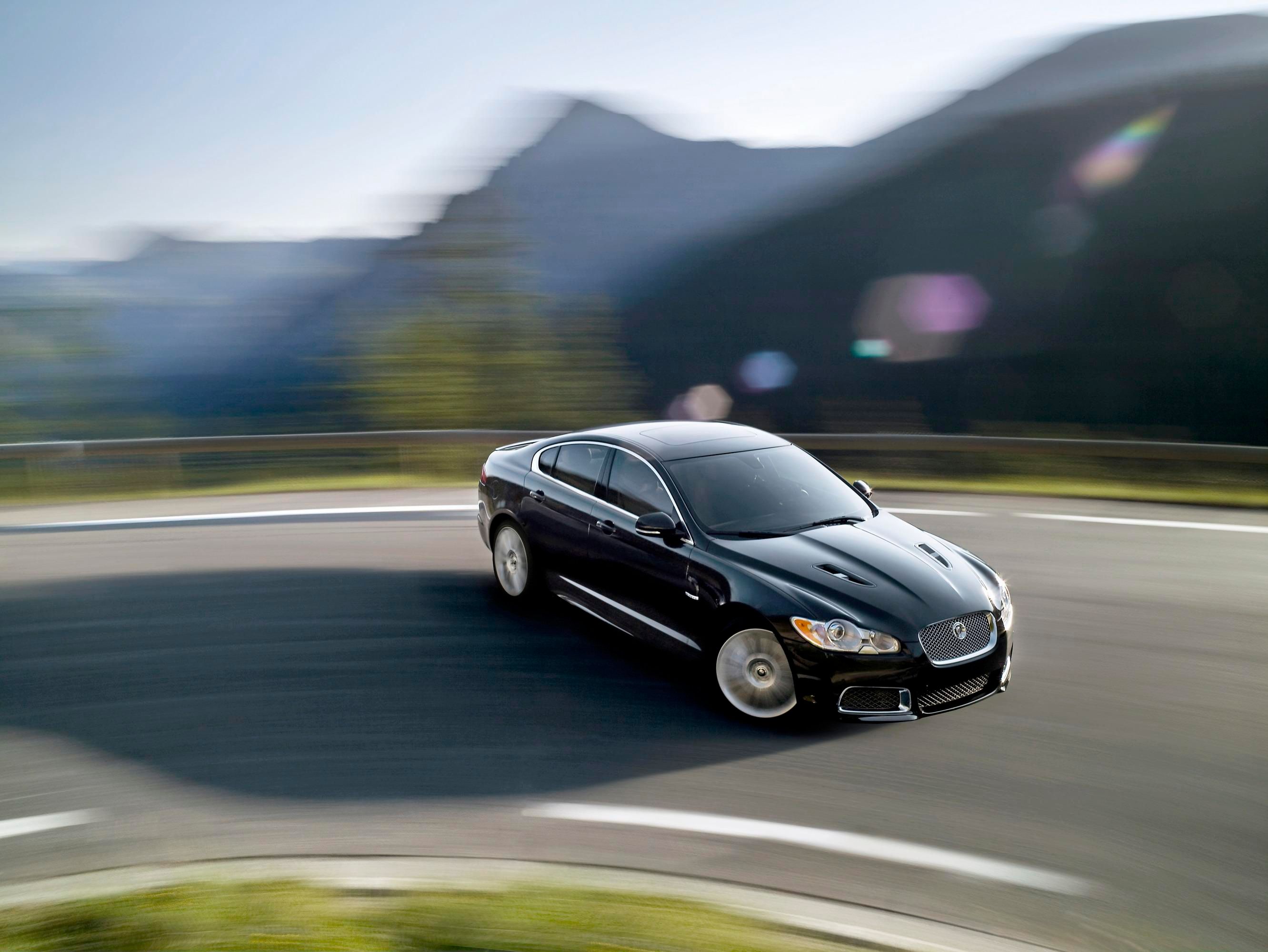 Simplicity and clever use of space are key to the XF’s interior design and this is unchanged in the new generation. For the driver, this is centred on the compact packaging of the JaguarDrive Selector™ transmission interface. The cast alloy Selector has already gained recognition for its part in the distinctive XF ‘welcoming handshake’; a sequence in which the illuminated stop/start button pulsates like a heartbeat until pressed, when the JaguarDrive Selector™ rises into the driver’s hand and the rotating facia vents silently open.
Simplicity and clever use of space are key to the XF’s interior design and this is unchanged in the new generation. For the driver, this is centred on the compact packaging of the JaguarDrive Selector™ transmission interface. The cast alloy Selector has already gained recognition for its part in the distinctive XF ‘welcoming handshake’; a sequence in which the illuminated stop/start button pulsates like a heartbeat until pressed, when the JaguarDrive Selector™ rises into the driver’s hand and the rotating facia vents silently open.
Features such as this have already attracted more than 30,000 customers to the new XF nine months after the start of customer deliveries – and now, in many instances, they have been enhanced even further. The combination of aluminium dashboard, satin or gloss wood veneers, tailored instrument panel and door panels with twin-needle stitching as standard, plus Phosphor Blue halo illumination and interior mood lighting, set the XF’s cabin as far apart from its competitors as its exterior styling.
Customers seeking luxury appointments should look to the new Portfolio specification. Available with either naturally aspirated V8 petrol, 3.0-litre V6 petrol and V6 diesel engines, the Portfolio model includes ultimate craftsmanship details such as contrast stitching on leather trim, Jaguar Suedecloth Premium headlining, deep-pile carpet mats with embroidered logos, wider veneer and colour choices and ventilated heated and cooled seats.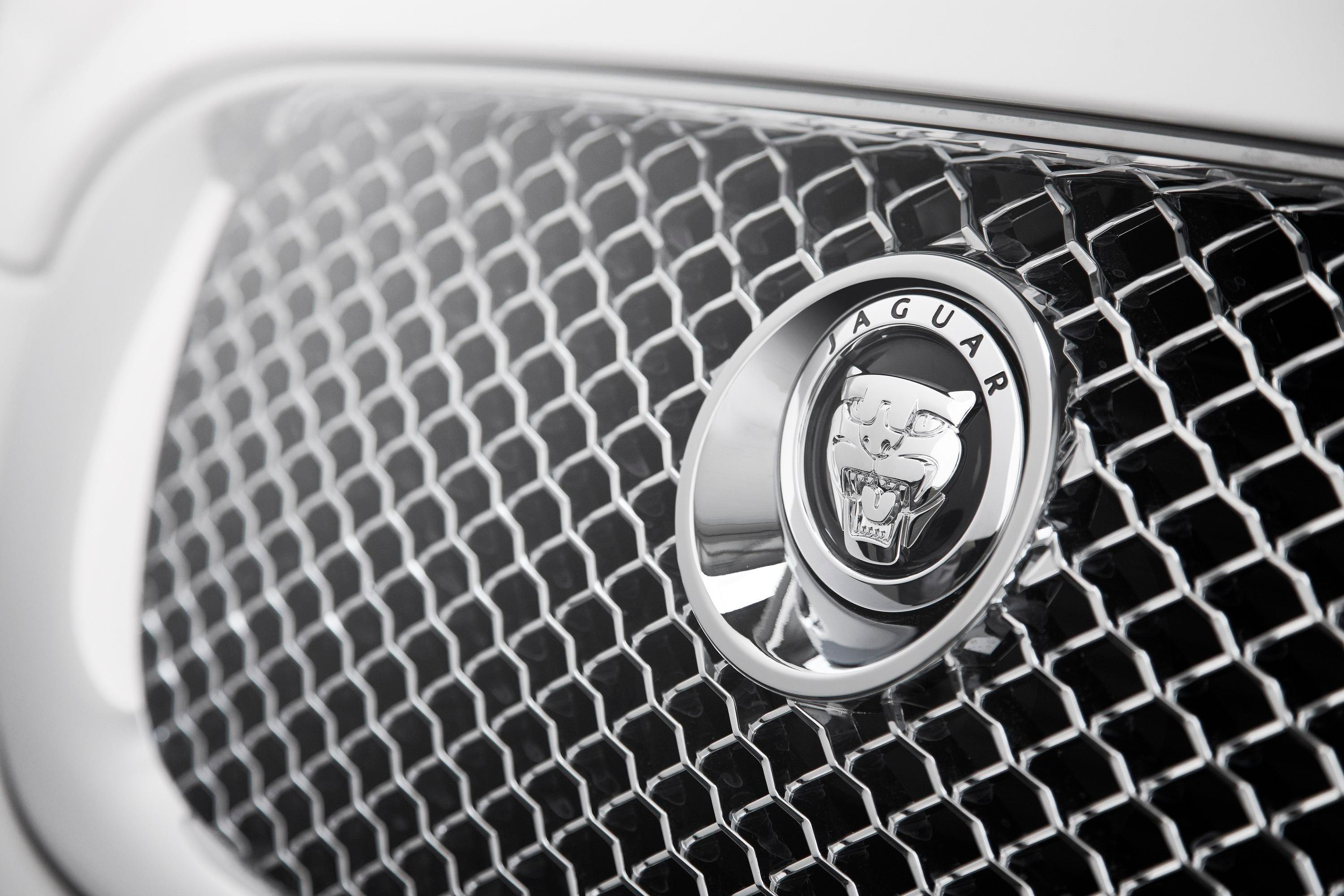 But it is the new powertrain options that are at the heart of the changes for 2010 model year. The all-new 5.0-litre AJ-V8 Gen III engines – in 385PS/515Nm naturally aspirated and 510PS/625Nm supercharged ‘R’ guise – add an entirely new, even more sporting dimension to the XF range. And don’t think for one moment that the new 3.0-litre turbodiesel engines are any less impressive than the new V8s. These new engines are Jaguar’s most advanced and most efficient ever. They deliver performance at a higher level across the board. In the case of the 5.0-litre supercharged engine, compared to the 4.2-litre V8 that it supersedes, power has increased by a remarkable 23 percent and torque by 12 percent.
But it is the new powertrain options that are at the heart of the changes for 2010 model year. The all-new 5.0-litre AJ-V8 Gen III engines – in 385PS/515Nm naturally aspirated and 510PS/625Nm supercharged ‘R’ guise – add an entirely new, even more sporting dimension to the XF range. And don’t think for one moment that the new 3.0-litre turbodiesel engines are any less impressive than the new V8s. These new engines are Jaguar’s most advanced and most efficient ever. They deliver performance at a higher level across the board. In the case of the 5.0-litre supercharged engine, compared to the 4.2-litre V8 that it supersedes, power has increased by a remarkable 23 percent and torque by 12 percent.
The result in the new XFR is a 0-60mph sprint time of just 4.7 seconds (0-100kph in 4.9 seconds). More relevant in everyday driving, an excellent indicator of XFR’s great flexibility is the time it takes to accelerate from 50-70mph – just 1.9 seconds.
Unique new XFR styling for sporting expression
The enhanced exterior styling of the XFR moves those sporting credentials on even further, to deliver the ultimate expression of Jaguar’s new saloon car design language - carrying a number of visual design cues that are intrinsic to Jaguar’s ‘R’ car philosophy. Its unique front-end design has a larger lower grille with new black-finished mesh, plus chrome outboard air intakes. The upper mesh grille retains XF’s bright finish, while the bonnet carries distinctive louvres, like those on the XKR sports car.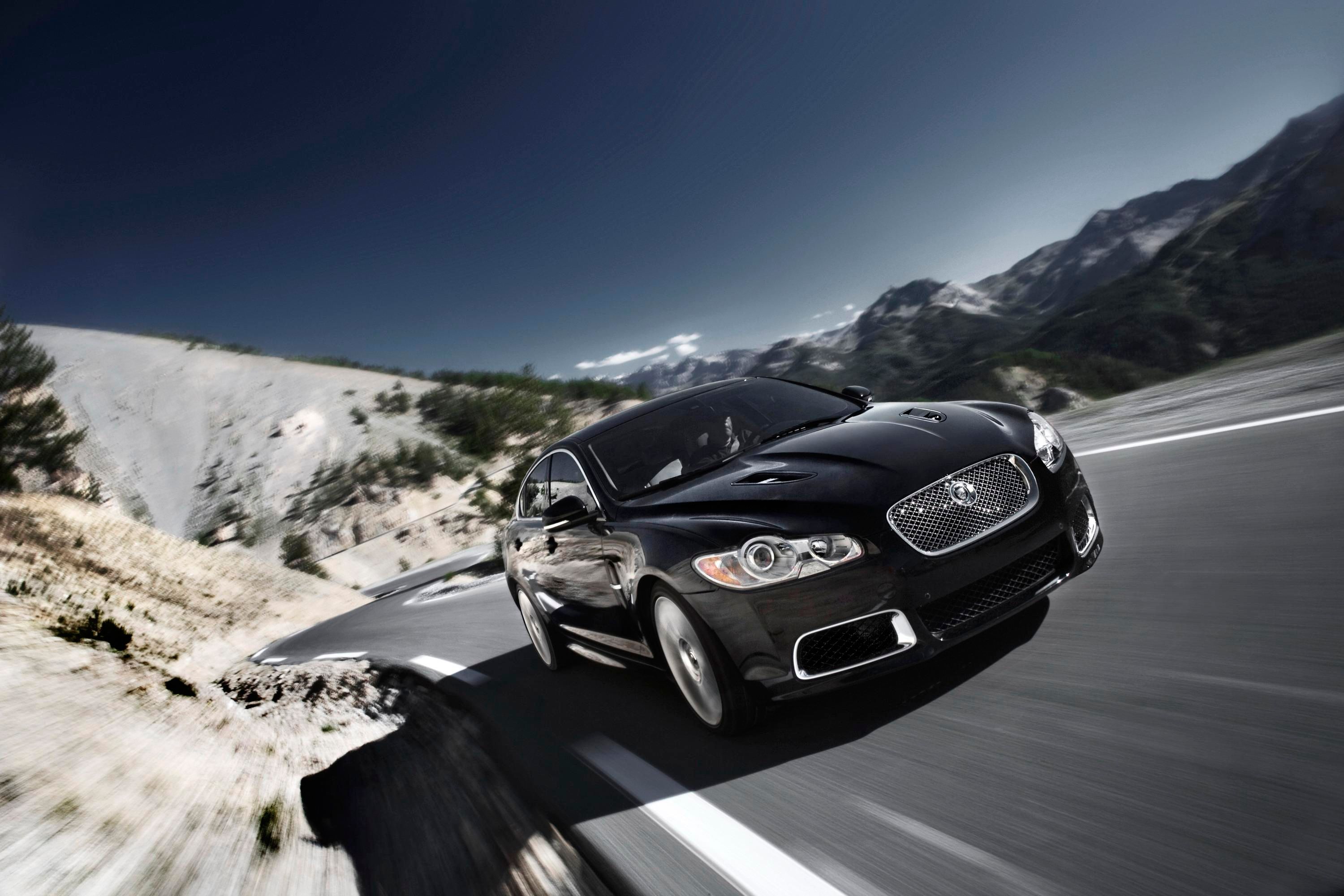 The XFR also features bold new sill extensions, while the rear bumper adds a unique body-coloured lower valance panel incorporating the ‘R’ signature of four large, bright-finished tail pipes. The new bootlid spoiler has a significant aerodynamic effect. Developed in conjunction with the new front bumper design, it further improves the XFR’s front/rear lift balance, and therefore its high-speed stability. A new exterior mirror design also offers aerodynamic improvements, plus improved functionality with its LED side repeaters.
The XFR also features bold new sill extensions, while the rear bumper adds a unique body-coloured lower valance panel incorporating the ‘R’ signature of four large, bright-finished tail pipes. The new bootlid spoiler has a significant aerodynamic effect. Developed in conjunction with the new front bumper design, it further improves the XFR’s front/rear lift balance, and therefore its high-speed stability. A new exterior mirror design also offers aerodynamic improvements, plus improved functionality with its LED side repeaters.
The XFR’s sporting character is clearly apparent in the 20-inch Nevis alloy wheels. It is the only car in its class to offer this size of wheel as standard specification. Those twin-seven-spoke wheels bear the wording ‘Jaguar Supercharged’ embossed around their centres, and are wrapped tightly around silver-grey brake callipers, which carry the evocative ‘R’ logo. The R badge also appears on the right-hand side of the boot lid drop panel, to complete the XFR’s external visual identity.
The new XFR is offered with a select palette of just eight exterior colours: Ultimate Black, Indigo, Liquid Silver, Lunar Grey, Porcelain, Botanical Green, Kyanite Blue and Salsa. All except Salsa and Porcelain are metallic colours and, within the XF range, Salsa and Kyanite Blue are unique to XFR. For each colour – as across the entire XF range – Jaguar suggests a ‘Designer’s Choice’ of the leather trim colours that best complement each body colour and the Warm Charcoal upper facia that is standard on every XFR.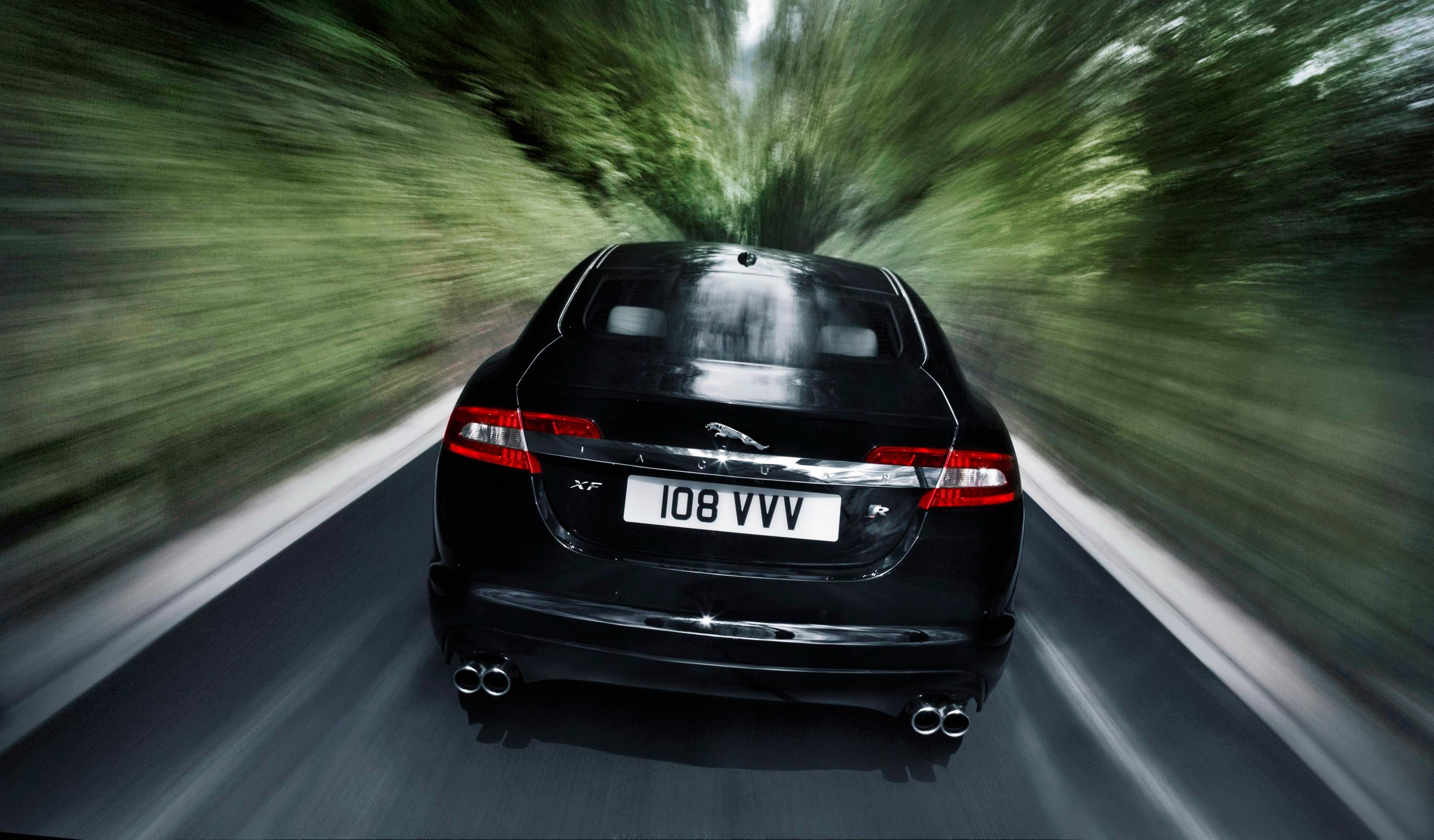 The interior design theme is modern and individual. The cabin environment is uniquely Jaguar and in the XFR more details hint at the car’s performance. A full soft grain leather interior is standard, with four colour choices – Warm Charcoal, Warm Charcoal/Red Zone, Warm Charcoal/London Tan, and Ivory. A new Dark Oak veneer is the standard finish for the XFR’s wood-trimmed areas. New 18x14-way adjustable sports seats have electrically adjustable squab bolsters for significantly improved support at higher cornering speeds. Each XFR seat has the ‘R’ logo embossed on its squab and the front seats have leather seat-back map pockets.
The interior design theme is modern and individual. The cabin environment is uniquely Jaguar and in the XFR more details hint at the car’s performance. A full soft grain leather interior is standard, with four colour choices – Warm Charcoal, Warm Charcoal/Red Zone, Warm Charcoal/London Tan, and Ivory. A new Dark Oak veneer is the standard finish for the XFR’s wood-trimmed areas. New 18x14-way adjustable sports seats have electrically adjustable squab bolsters for significantly improved support at higher cornering speeds. Each XFR seat has the ‘R’ logo embossed on its squab and the front seats have leather seat-back map pockets.
The fascia introduces a unique, dark mesh aluminium finish, and another discreet ‘R’ badge on the passenger side of the instrument panel. The speedometer and tachometer have the unique sporting signature of red dial pointers, and carry the ‘Supercharged’ motif. And at start-up, the ‘R’ logo appears on the Touch-screen as part of the XFR ‘driver handshake’ sequence.
New supercharger optimises power
A sixth-generation, twin vortex system (TVS) supercharger is fitted to the XFR’s 510PS engine. It is a compact Roots-type unit, feeding air through twin intercoolers, which in turn are water-cooled by their own discreet cooling circuit. The high helix rotor design improves the supercharger thermodynamic efficiency by 16 percent. It also improves noise quality to the point where the unit is now virtually inaudible (making supercharger whine a thing of the past). The intercoolers reduce the temperature of the pressurised intake-air and so optimise power and efficiency.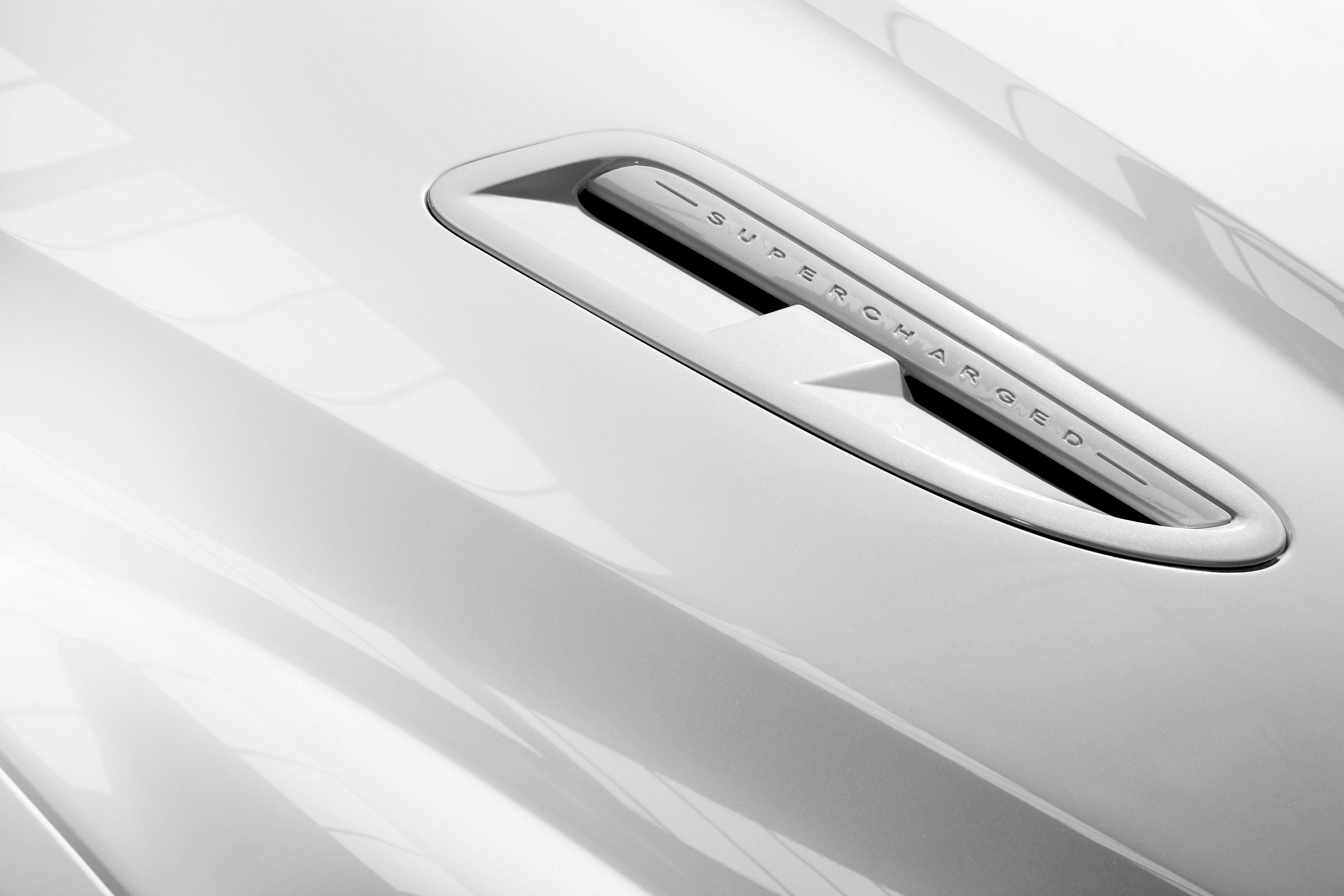 The new air intake has been radically redesigned compared to the previous V8. The intake air path is a direct feed to the supercharger inlet from the centrally mounted front throttle body. Air is delivered through twin air boxes, which reduce flow loss and further increase efficiency.
The new air intake has been radically redesigned compared to the previous V8. The intake air path is a direct feed to the supercharger inlet from the centrally mounted front throttle body. Air is delivered through twin air boxes, which reduce flow loss and further increase efficiency.
Mechanically, the new supercharger and its intercoolers are efficiently packaged in the ‘V‘ of the engine to deliver a low overall engine height in support of pedestrian safety requirements.
Driving Dynamics
The headline advances made by Jaguar’s new engines are hugely significant and impressive. They take Jaguar’s philosophy of ‘intelligent power’ to another new level and that means instant responses, seamless power and smooth, refined performance with comparable fuel economy and better emissions – all thanks to intelligent use of the most advanced technologies. And, of course, in XFR guise, it makes for the quickest XF yet.
Mike Cross, Chief Engineer, Vehicle Integrity, explains the significance of the powertrain changes in the 2010 XF range: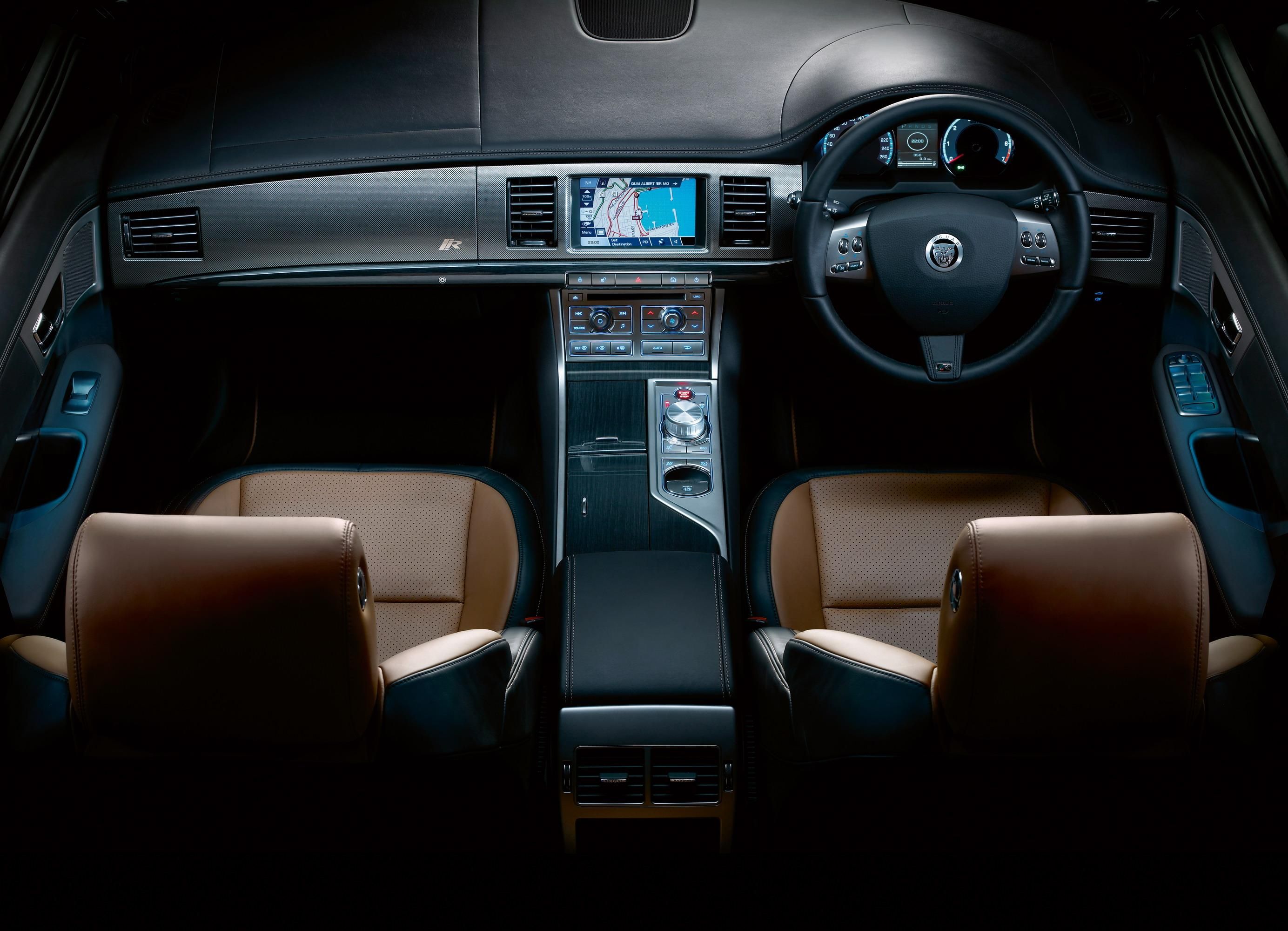 “Instant response, seamless power delivery and smooth refined performance characterise the new XF diesel and V8 petrol engines. The awesome 510PS supercharged V8 engine in the XFR delivers thrilling performance to satisfy the most demanding drivers.”
“Instant response, seamless power delivery and smooth refined performance characterise the new XF diesel and V8 petrol engines. The awesome 510PS supercharged V8 engine in the XFR delivers thrilling performance to satisfy the most demanding drivers.”
Allied to a class-leading automatic transmission featuring Jaguar’s lightning-quick Sequential Shift system and advanced technologies such as the new Active Differential Control and Adaptive Dynamics, the XFR offers an exhilarating driving experience, yet one that is still accessible to everyone.”
In line with the additional performance, XFR adopts the largest brakes fitted to the XF range, with 380mm diameter internally ventilated front discs. XFR’s unique 20-inch wheels and tyres were specifically chosen to enhance the dynamic character of the car, and in particular to optimise wet weather grip.
Jaguar’s Emergency Brake Assist is standard on XF and Adaptive Cruise Control (ACC) is now available as an option all models. Advanced Emergency Brake Assist is a new attribute of the ACC system on the new 3.0 V6 diesel and 5.0 V8 petrol models; it uses the ACC radar to calculate distance from and speed of approach to the vehicle ahead and pre-charges the brake-line pressure to minimise impact speed if a collision is predicted – as well as giving an audible warning to the driver.
To improve handling and steering responses, the XFR is fitted with a ‘fast ratio’ steering rack, and additionally benefits from the further improved front-to-rear aerodynamic balance offered by a new boot lid spoiler and deeper front bumper. This is a significant gain as XF’s lift balance was already best in class, and its low overall aerodynamic drag coefficient of only 0.29Cd contributes to both low wind noise and inherent high-speed stability.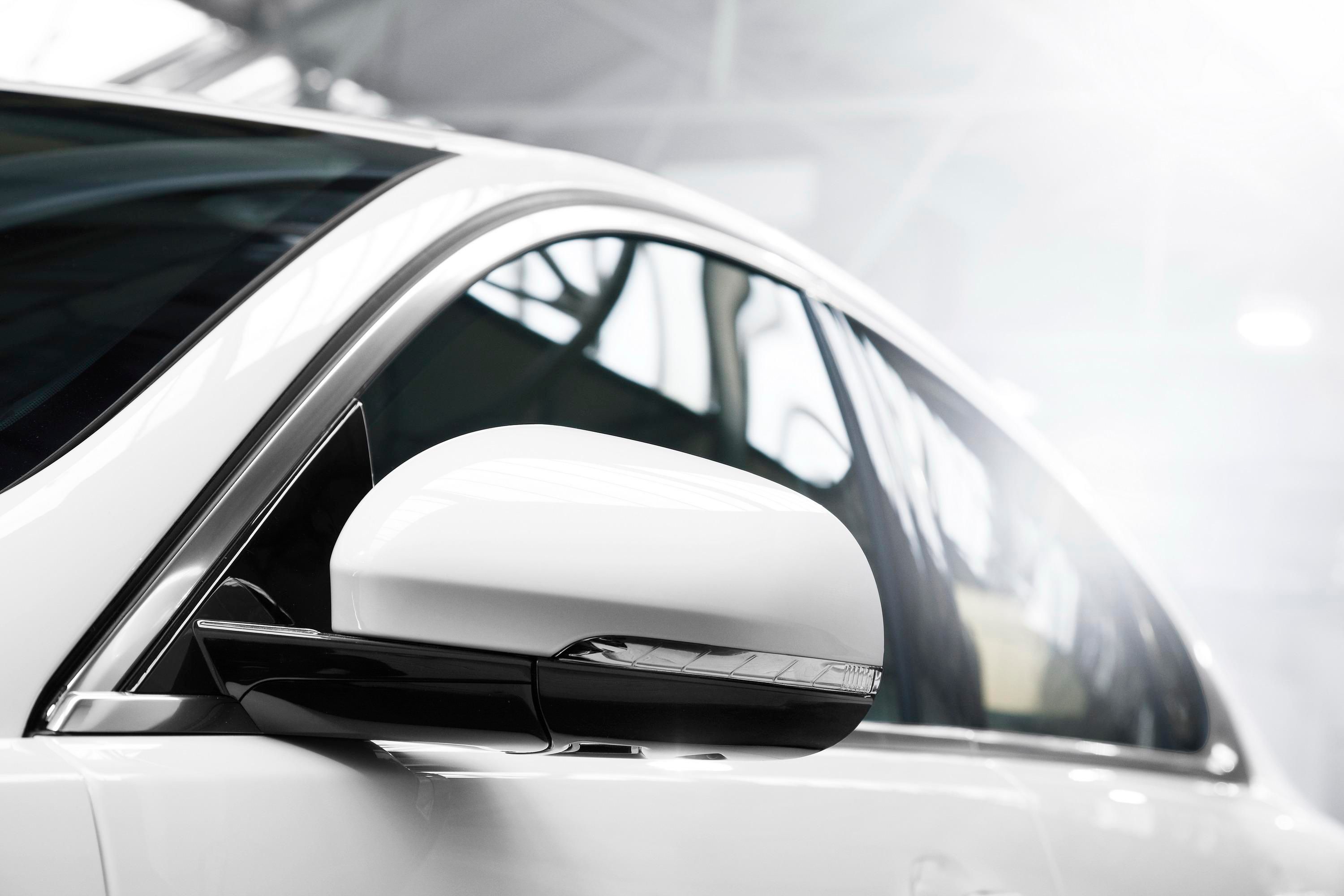 The XF’s body shell is already extremely stiff - in fact the stiffest in its class. This is key to the XF delivering superb ride and handling based on taut body control and precise, responsive steering. The bodyshell for the new XF 2010 Model Year is even stiffer, thanks to a new rear subframe and the adoption of a boot cross-brace that was previously only fitted to the XF SV8 supercharged model.
The XF’s body shell is already extremely stiff - in fact the stiffest in its class. This is key to the XF delivering superb ride and handling based on taut body control and precise, responsive steering. The bodyshell for the new XF 2010 Model Year is even stiffer, thanks to a new rear subframe and the adoption of a boot cross-brace that was previously only fitted to the XF SV8 supercharged model.
Latest computer-controlled suspension and differential
The biggest changes in chassis dynamics for the XFR, however, come from two new advanced technologies, Adaptive Dynamics and Active Differential Control, which are both incorporated as standard.
Active Differential Control (ADC) with traction-only functionality and handling functionality is an electronically controlled alternative to the traditional, wholly mechanical differential, offering more subtle control strategies.
ADC can vary its locking torque (and therefore the proportion of torque to each driven rear wheel) depending on surface conditions and power applied. Its control strategies optimise traction at each wheel, improving acceleration on low-grip surfaces while also enhancing cornering ability.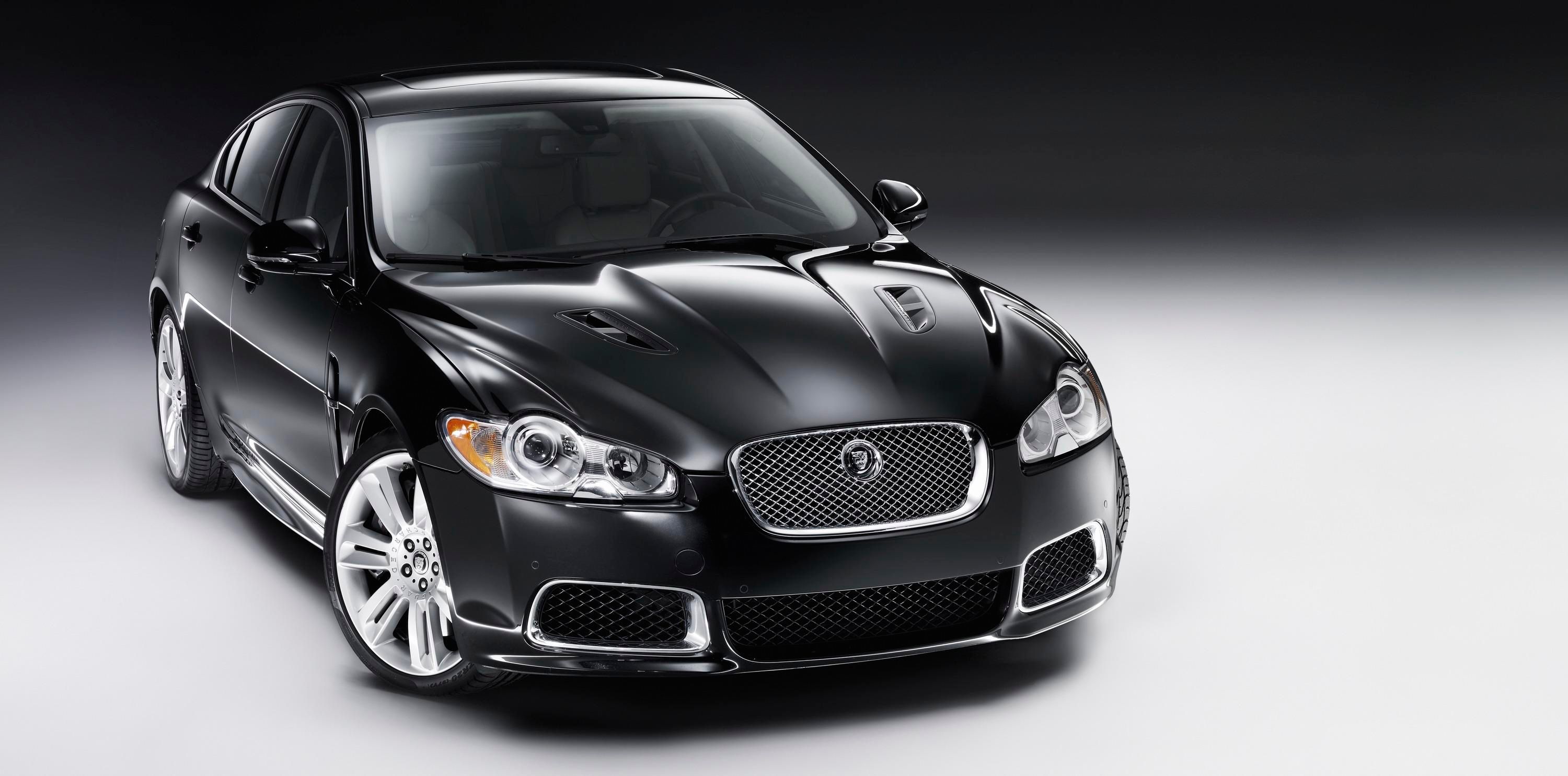 ADC has no adverse effect on either refinement or stability – where the traditional, mechanical differential can compromise stability under hard applications of power, demanding more corrective input from the driver.
ADC has no adverse effect on either refinement or stability – where the traditional, mechanical differential can compromise stability under hard applications of power, demanding more corrective input from the driver.
Whereas a mechanical differential is a permanently active part of the drivetrain, the XFR’s new ADC system is switched off when not required, so does not create undesirable understeer and creates no issues with NVH at lower speeds.
The differential is operated by an internal electric motor and ‘ball-and-ramp’ mechanism, and contains a multiplate clutch, which transmits or ‘vectors’ torque to the wheel with most grip. The multi-plate clutch assembly is designed to prevent excessive differential slip, but differs fundamentally from a conventional traction control which uses the brakes to counteract slip after it has occurred.
Continuously variable damping
Adaptive Dynamics, which replaces Jaguar’s proven Computer Active Technology Suspension (CATS) on the XFR, is a highly sophisticated active damping system which automatically adjusts suspension damper settings to suit both road conditions and the way in which the car is being driven. By removing the need for compromise between a fixed, softer setting for ride comfort and a fixed, firmer setting for tauter body control and handling, Adaptive Dynamics allows the balance between ride and handling to be optimised whatever the circumstances. Unlike earlier systems with only a small number of steps in the damper settings, it offers a progressively variable damping strategy between wide extremes, to deliver a comfortable but sporty ride with impressively sharp handling.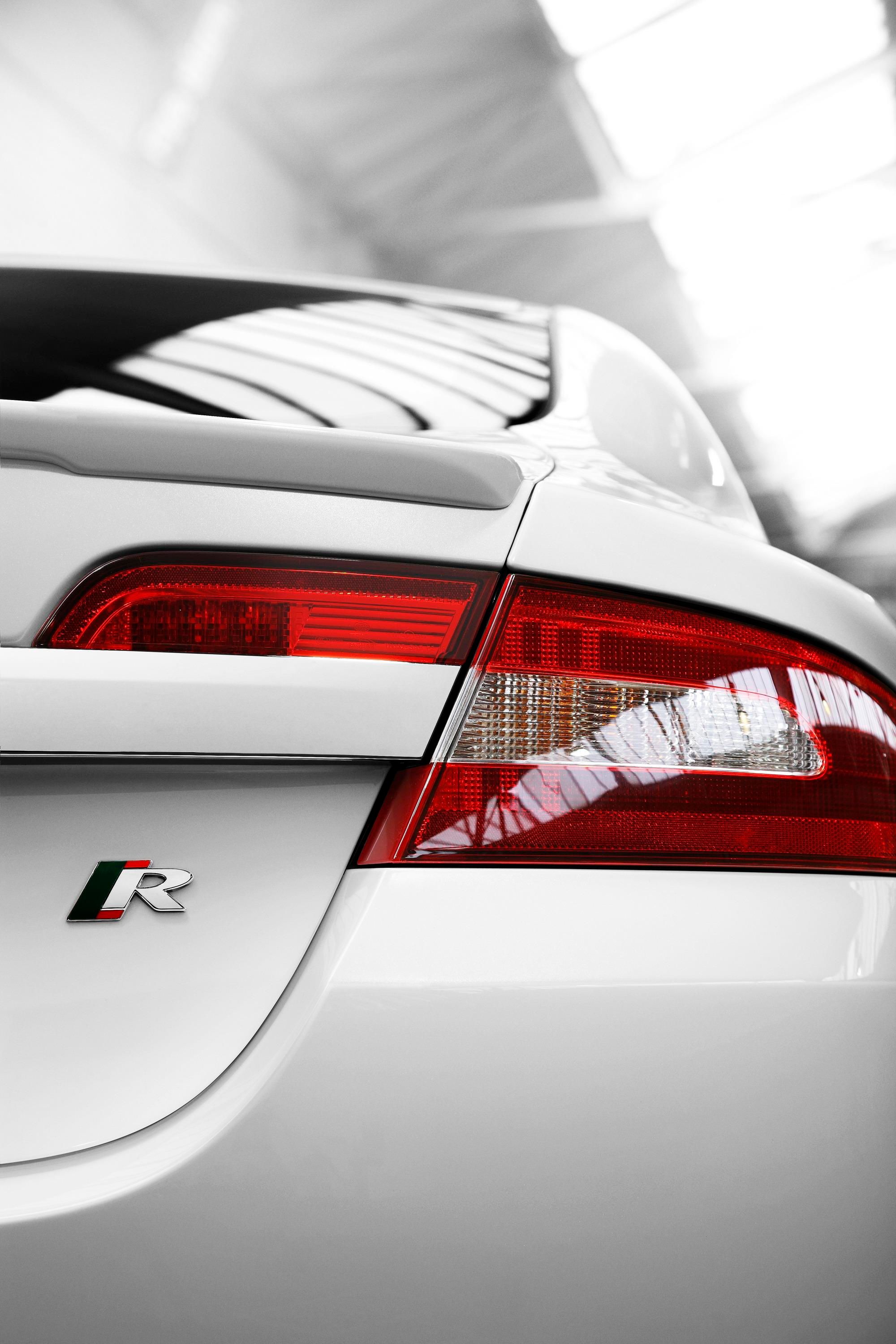 The three primary functions of Adaptive Dynamics are to control vertical movement, roll rate and pitch rate of the body. It does this by analysing induced body motions one hundred times a second, and setting each damper to an appropriate level in order to maintain a constant and level body attitude, thereby optimising control without compromising ride. Also one hundred times a second, it predicts the roll-rate due to steering inputs, and selectively increases damping forces to reduce that roll-rate – improving feel and driver confidence – as well as analysing fore and aft pitch rate due to throttle and braking inputs, and again varies damping forces to reduce pitch, further improving comfort and control.
The three primary functions of Adaptive Dynamics are to control vertical movement, roll rate and pitch rate of the body. It does this by analysing induced body motions one hundred times a second, and setting each damper to an appropriate level in order to maintain a constant and level body attitude, thereby optimising control without compromising ride. Also one hundred times a second, it predicts the roll-rate due to steering inputs, and selectively increases damping forces to reduce that roll-rate – improving feel and driver confidence – as well as analysing fore and aft pitch rate due to throttle and braking inputs, and again varies damping forces to reduce pitch, further improving comfort and control.
Additionally, Adaptive Dynamics improves ride by monitoring wheel position 500 times a second and automatically increasing damping rate as the suspension approaches the limits of its travel. Similarly, it controls wheel ‘hop’ by varying damping to move any wheel out of a natural bouncing frequency, again benefiting ride comfort, handling, and even grip.
XFR also features Handling Functionality, which is unique in this class. In conjunction with the DSC Off option and JaguarDrive Control™ with Dynamic Mode, this supplements all the advantages of Traction Only Functionality with a number of more driver-focused dynamic characteristics. When selected, Dynamic Mode (which is also standard on the new naturally aspirated 5.0-litre V8 petrol and new 3.0-litre V6 diesel models) modifies the throttle, stability and transmission parameters, and on XFR only it also modifies the Adaptive Dynamics responses. The combination of ADC and Dynamic mode with DSC Off allows controllable power-on oversteer, and improves off-throttle stability, allowing quicker, more spirited cornering. It can also improve stability in situations such as an emergency lane-change manoeuvre at high speed and, in combination with DSC, reduce the brake interventions which the more enthusiastic driver might see as intrusive.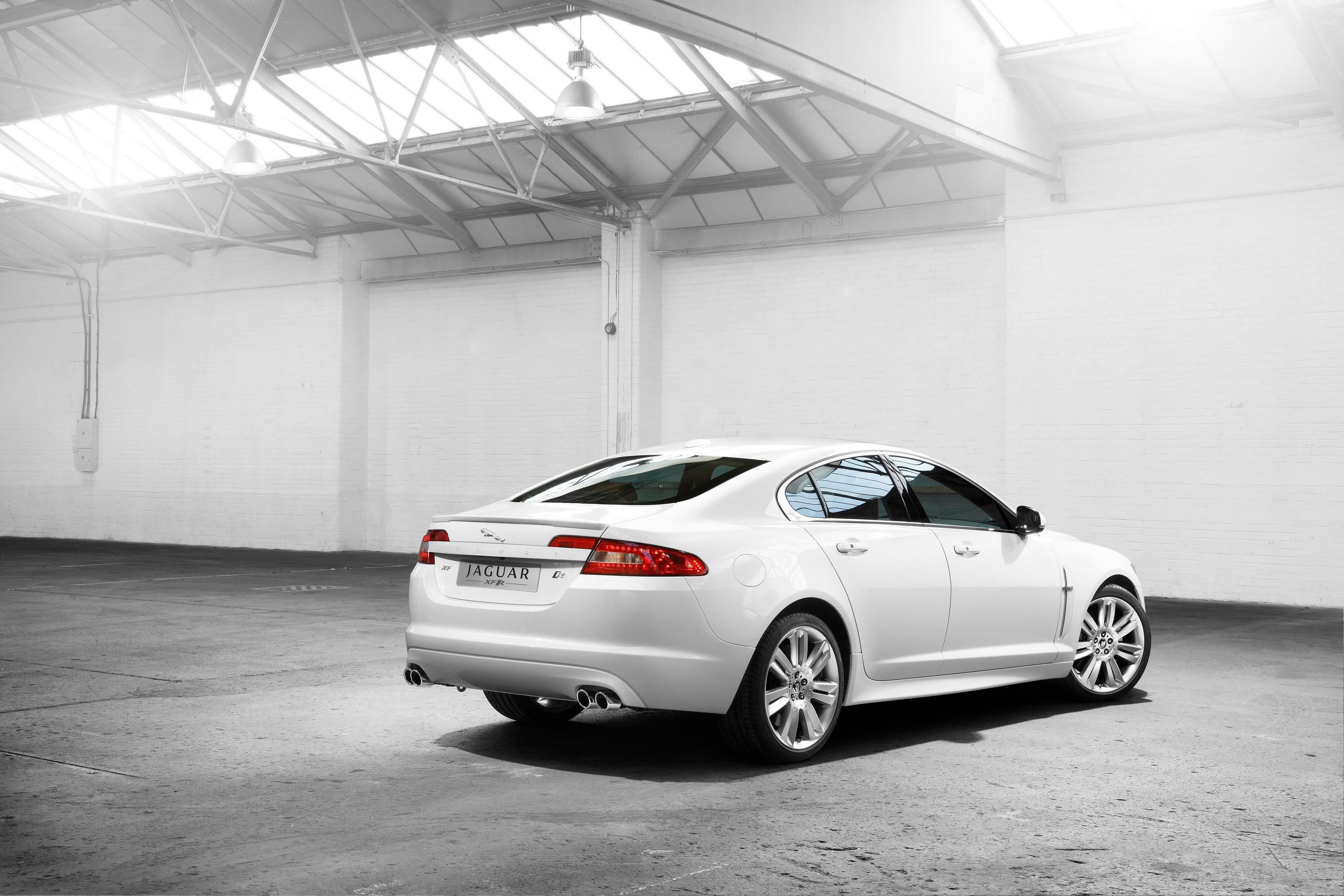 So, working with DSC, the TCS traction control system and ABS braking function, ADC can significantly improve overall vehicle performance, and provide even more precise driving feel. Together with its very high performance potential, that is what defines the new XFR as a perfect home for Jaguar’s ‘R’ philosophy, and the sportiest of all XF models.
So, working with DSC, the TCS traction control system and ABS braking function, ADC can significantly improve overall vehicle performance, and provide even more precise driving feel. Together with its very high performance potential, that is what defines the new XFR as a perfect home for Jaguar’s ‘R’ philosophy, and the sportiest of all XF models.

